Hotel Review: The Westin Josun Seoul
The Westin Josun Seoul is South Korea’s oldest hotel. Established in 1914, the hotel is surrounded by countless business headquarters, embassies, and royal palaces, with some artifacts from the Josun era still present on the hotel grounds. With over 100 years of history, the Westin Josun Seoul set a strong foundation for standards of South Korean hospitality. I booked a stay at the Westin Josun Seoul, intrigued about its growth and evolution over the years. Here is my review of The Westin Josun Seoul:
The Westin Josun Seoul is located at 106 Sogong-ro, Jung-gu, Seoul.
What Card(s) Should You Use to Book?
I earn tons of Marriott Bonvoy points by using my American Express Marriott Bonvoy Brilliant card. It currently offers a sign-up bonus of two 85,000 free night awards when you spend $6,000 within your first 6 months of card membership. The card earns 6X Marriott Bonvoy points per dollar when you book directly with Marriott, 3X points on dining and flights booked directly with airlines, and 2X on all other purchases. Paired with Marriott’s promotions and AMEX offers, it opens doors to endless points-earning opportunities.
The AMEX Marriott Bonvoy Brilliant card comes with great benefits that can substantially offset its annual fee.
The AMEX Marriott Bonvoy Brilliant card does come with a hefty $650 annual fee but offers tons of perks to significantly offset its costs. The card features the following benefits:
Automatic Marriott Bonvoy Platinum Elite status
$25 monthly dining credit—$300 total in a year
$100 property credit when booked directly with Marriott and staying a minimum of two nights at Ritz-Carlton or St. Regis properties
An 85,000-point Free Night Award
Access to Priority Pass lounges
25 Elite Night Credits for chasing Marriott Bonvoy status
Even if you don’t stay at Marriott properties often, this card is still a must-have, in my opinion. It’s a true example of a keeper card that offers benefits that outweigh the annual fee.
If you’d like to apply for the AMEX Marriott Bonvoy Brilliant card, please consider using my referral link. It will continue to help fund my blog operations and help visitors make informed decisions to maximize their rewards. Thank you! Click HERE to access my referral link!
If you are looking for a Marriott Bonvoy credit card with a low annual fee, consider the Chase Marriott Bonvoy Boundless card. It currently offers a sign-up bonus of 75,000 bonus points after spending $3,000 in the first six months from account opening. On top of that, you can earn additional 50,000 bonus points by staying six eligible paid nights at Marriott Bonvoy hotels through January 31, 2024—totaling 125,000 bonus points. I personally value Marriott Bonvoy points at 0.8 cents each, making the 125,000 points offer worth $1,000. The Chase Marriott Bonvoy Boundless card earns 6X points per dollar when you book directly with Marriott, 3X points on the first $6,000 spent in combined purchases every year on dining, grocery stores, and gas stations, and 2X points on all other purchases.
Be aware that 15 elite night credits from the Chase Marriott Bonvoy Boundless card can’t be combined with 15 elite night credits from the AMEX Marriott Bonvoy Brilliant card
The Chase Marriott Bonvoy Boundless card’s annual fee is $95, and it offers useful perks to offset the cost:
Automatic Marriott Bonvoy Silver Elite status, the low-tier status offered in Marriott’s member ecosystem
A 35,000-point Free Night Award
15 Elite Night Credits that will help you achieve a higher Marriott Bonvoy status
Please note that you can’t combine Elite Night Credits from two Marriott Bonvoy personal credit cards, but you can stack Elite Night Credits from one personal and one Marriott Bonvoy business card. Thus, if you own both AMEX Marriott Bonvoy Brilliant and Chase Marriott Bonvoy Boundless, you would only earn 25 elite night credits.
If you’d like to apply for the Chase Marriott Bonvoy Boundless card, please consider using my referral link. It will continue to help fund my blog operations and help visitors make informed decisions to maximize their rewards. Thank you!
The last Marriott Bonvoy credit card you could use would be the AMEX Marriott Bonvoy Business card. It currently offers a sign-up bonus of 125,000 Marriott Bonvoy points when you spend $5,000 within your first 3 months of card membership. Considering that the annual membership costs $125, you get paid to have the card! The card earns 6X Marriott Bonvoy points per dollar when you book directly with Marriott, 4X points on dining, U.S. shipping purchases, U.S. wireless telephone services, and at U.S. gas stations. All other purchases earn 2X points.
The AMEX Marriott Bonvoy Business card is the only Marriott business card on the market.
The AMEX Marriott Bonvoy Business card’s annual fee is $125, and it offers valuable benefits to justify the cost:
Automatic Marriott Bonvoy Silver Elite status, the low-tier status offered in Marriott’s member ecosystem
A 35,000-point Free Night Award
15 Elite Night Credits, which can be combined with 15 Elite Night Credits from other personal Marriott Bonvoy credit cards
As you can see, the card’s benefits are less substantial than the ones from the AMEX Marriott Bonvoy Brilliant card, but it is a great long-term keeper card due to its annual Free Night Award perk. Furthermore, it is absolutely necessary if you want to chase a higher Marriott Bonvoy status because it is the only Marriott business card that is on the market and will grant you an additional 15 Elite Night Credits. Lastly, even though it is a business credit card, it is very likely that you could get it approved. Check out my article on how to apply for a business credit card as a sole proprietor.
If you’d like to apply for the AMEX Marriott Bonvoy Business card, please consider using my referral link. It will continue to help fund my blog operations and help visitors make informed decisions to maximize their rewards. Thank you! Click HERE to access my referral link!
Location
The Westin Josun Seoul is located in the heart of Seoul. Its convenient location allows guests to explore local attractions such as Gyeongbokgung Palace and Bukchon Hanok Village, just minutes away on foot, while providing easy access to the city's subway lines for those who wish to venture farther. Additionally, the hotel is surrounded by a range of restaurants and shops in Myeong-Dong, full of opportunities to experience Korean cuisine and culture.
Lobby & Check-In Review
We arrived at the hotel around 3 PM, and the lobby was very crowded, full of guests trying to check out and check in. I have Titanium Elite status with Marriott Bonvoy, and I used the priority lane to get checked in sooner than other folks.
The lobby was filled with guests eager to check in, but I was able to expedite the process by utilizing the dedicated check-in line for guests with elevated Marriott Bonvoy statuses.
The front desk representative was very polite and kind. When I shared with him that my Suite Night Award was rejected, he told me that they had actually set aside one suite for me. I was thrilled to be upgraded to a suite, and since my booking rate included two tickets to an exhibition by Jean Jullien, a prolific French graphic design artist, at The Dongdaemun Design Plaza (DDP). Each ticket was about 20,000 KRW, and unfortunately, I didn’t have time to attend it, so I gave them to my brother.
The lobby at The Westin Josun Seoul exuded an elegant and festive ambiance with twinkling fairy lights.
The receptionist went over amenities and benefits, and with my Titanium Elite status, I could choose one of the following welcome benefits: a small bottle of wine, extra Marriott Bonvoy points, or an upgrade from breakfast at the executive lounge to breakfast at one of the hotel’s restaurants, Aria. I almost always choose complimentary breakfast, and an upgrade seemed logical given that we probably would experience higher quality food.
There were many shops on the lobby level, including this boutique flower shop.
After checking in, we roamed around the lobby to check out the artwork and pop-up stores. Le Persona, a Korean fragrance brand, featured some of its signature scents, and the brand collaborated with the hotel bar and offered cocktails reflecting the fragrances.
The lobby hosted a pop-up store for a Korean fragrance brand called Le Persona , featuring its signature scents.
In addition to modern pop-ups, the most significant attraction of the hotel was the outside grounds, where you will find Hwangudan and other historic artifacts and architecture.
In 1897, Hwangudan was constructed as an altar where the emperor conducted ceremonies to offer sacrifices to heaven.
Hwangudan was an altar where an emperor performed sacrifices to heaven, and it was built in 1897. Next to Hwangudan, you can find three stone objects; they are stone drums that were set up in 1902 to commemorate the 40th anniversary of Emperor Gojong’s ascension to the throne.
These stone drums were placed in 1902 to mark the 40th anniversary of Emperor Gojong's coronation.
The stone drums gave shape to the instruments used when offering sacrifices to heaven. The detailed dragon patterns on the side of the stone drums and the ornate structure of Hwangudan were impressive, and I couldn’t believe they were made over a century ago.
I was captivated by the intricate dragon patterns on the sides of the stone drums that were more than a century old.
After exploring the hotel grounds, we went up to the 14th floor, where the suite was located.
Living Room & Bedroom Review
Upon arrival, my executive suite revealed a characteristically spacious living room with an array of muted furnishings that evoked feelings of sterility.
The executive suite's living area was quite modest and lacked distinctive character.
A comfortable couch and rectangular coffee table provided the perfect spot to relax after long days at work or meetings; next to it was a digital tablet functioning as a master control for adjusting lights and temperature with just one touch.
Guests could conveniently manage the suite using an interactive digital tablet.
For productivity, there was also ample workspace available, and a wall-mounted smart TV brought entertainment to the living space. The viewing angle wasn’t ideal, but at least I could adjust it by slightly tilting it.
The positioning of the smart TV was less than ideal, primarily because of its viewing angles and distance from the seating area.
Nestled in the corner of the living room, I was delighted to find a minibar equipped with a Nespresso machine and a welcome amenity—a box of sweet flaked almond crisps.
I received two complimentary tickets to an exhibition by Jean Jullien, a prolific French graphic design artist, at The Dongdaemun Design Plaza (DDP).
The crisps complemented coffee and tea very well, but the minibar only came with three espresso pods, and I had to remind the hotel to refill them every morning. While there were no spirits available, various sodas and beer were chilled nicely in the mini-fridge.
Seoul has countless 24/7 convenience stores where you can find items at much more affordable prices than those in the minibar.
Luckily, just steps away from our hotel lay several convenience stores where I could purchase more drinks if needed. After pushing open the sliding doors, I stepped into the traditional-style bedroom.
The bedroom maintained a traditional ambiance with its neutral-toned furniture, devoid of any decorations.
A king bed with a built-in headboard occupied a great chunk of the bedroom, but there was still remaining space to be filled. The mattress was plush, and across from the bed was the second wall-mounted smart TV ready for entertainment.
The wall-mounted TV in the bedroom was also a Smart Tv, expanding our entertainment options.
The headboard had an extensive master control panel with outlets and USB ports, and it conveniently had a 110V outlet for American travelers.
I didn’t need to use my international travel adapter since the bedside outlets could accommodate 110V.
A lonely lounge chair occupied the remaining space in the bedroom, and while the windows in the living room and the bedroom didn’t stretch from the floor to the ceiling, I overlooked Hwangudan and could see the old City Hall.
Looking through the buildings from the bedroom window, I had a view of the old City Hall and the seasonal ice rink.
I expected the Westin executive suite to adhere to its classic and simple design philosophy. However, while it provided a comfortable living space that was more spacious than other Seoul hotels, nothing truly stood out. Ultimately, there wasn't enough character or charm within the room, which made my lodging experience slightly dissatisfying. The traditional design felt disappointingly mundane and uninspiring, which could be perfect for older audiences perhaps, but certainly not suitable if you're looking for something fresh and exciting.
Bathroom Review
As an executive suite, the room came with a half bath and a master bath. The half bathroom was conveniently located by the suite entrance, featuring a single sink vanity and a toilet with a bidet.
Although the granite walls and flooring were well-maintained, their traditional aesthetic didn't align with my personal preferences.
It was finished with brown granite flooring and walls, and though it felt slightly outdated, a modern light strip by the sink somewhat elevated the atmosphere. The master bathroom followed a similar design language, but it was much more spacious.
The master bathroom featured just a single sink, and it retained a conservative character.
Despite the roominess, there was only one sink, and the hotel allocated space for a walk-in closet that was connected to the master bathroom. While some could appreciate the ample closet space, I would’ve preferred a double sink vanity to make getting ready in the morning more effortless.
The walk-in closet offered plenty of space, but I was unsure about whether it was worth sacrificing bathroom space for it.
The toiletries were by Prija; I was slightly put off by its strongly artificial colors, but the products were nourishing and balanced.
The formulas used for the Prija products are not tested on animals and are free from ingredients deriving from them.
The master bathroom featured a walk-in shower and a standalone tub. Though the tub was only big enough to fit one adult at once, I appreciated having the option to reinvigorate at my convenience after a long day of exploring Seoul.
It was evident that the interiors of The Westin Josun Seoul were not in line with modern trends and aesthetics.
However, the walk-in shower was slightly disappointing; the shower head was archaic for a five-star property, and the water pressure was not great, resulting in mediocre showers.
The walk-in shower left much to be desired, offering lackluster water pressure and an outdated showerhead.
The bathrooms illustrated the problem with the Westin brand. The design approaches and amenities are getting older, and it’s becoming increasingly difficult to view the Westin brand as a premium Marriott brand. Fortunately, international Westin properties seem to take the brand identity more seriously, but there is no denying that the bathrooms need upgrades to stay adaptive in the competitive hotel market in Seoul.
Executive Lounge Review
The executive lounge, Westin Club, was located on the 20th floor, and due to the high occupancy rate, the hotel temporarily offered additional lounge space, J Lounge, on the 2nd floor. Westin Club operated daily from 5 PM to 9:30 PM, and J Lounge was open from 5:30 PM to 9:20 PM. I initially wanted to go to J Lounge, which features live jazz, but because we had an early dinner reservation, we went to Westin Club for pre-dinner cocktails as soon as it opened.
If you don’t hold Platinum Elite status or above, you will need to pay to visit the executive lounge.
Once we arrived on the 20th floor, we checked in with the receptionist, who confirmed our complimentary admission. The lounge was polished, with mature brown marble flooring and strategic ambient lighting.
The room situated apart from the buffet area was notably quieter in comparison to the main dining space.
Even though we arrived at the lounge quite early, all the window seats were taken by early birds. The floor-to-the-ceiling windows looked great, with the view of Seoul and NamSan Mountain in the background.
Many guests preferred the tables with Namsan Mountian in the backdrop.
The lounge had one main area for food and beverages, and the bar was a self-pour bar with bottles of wine, liquor, and beer.
All the food and beverage stations, including alcoholic beverages, at the lounge were self-serving stations.
While there was no cocktail recipe book like at The Plaza Hotel Seoul, the bar had all the essential liquors, including whiskey, vodka, gin, and tequila.
The executive lounge was an excellent spot to indulge in a few pre-dinner cocktails.
You won’t find a cocktail shaker, but at least there were lemon slices and various mixers. I went with good ol’ Jack and Coke, and my fiance had a glass of white wine.
The executive lounge also served wine and featured common liqueurs to elevate cocktails.
In terms of food offerings, the lounge featured fried rice, fried tofu, and soy-braised chicken, and they were all on food warmers to keep them hot.
While the dishes at the executive lounge lacked some flavor, they were at least served warm.
They were a little bland, in my opinion, but you could definitely make a meal out of fresh and tasty salads. I particularly enjoyed the duck salad, and the asparagus salad was a refreshing option to brighten heavy dietary options in the buffet.
The duck salad and asparagus salad presented light and refreshing flavors that contrasted heavy flavors of the entrees.
The meat and cheese selections were decent but nothing extraordinary. I actually liked the fruit section the most; there were precut fruits, including grapefruit, grape, and dragon fruit, and the dragon fruit was ripe and juicy and full of refreshing tropical flavors.
The dragon fruit was perfectly ripe, bursting with juiciness and refreshing tropical flavors.
Keep in mind that unless you are Platinum Elite or higher or stay in an executive-level room, you will have to pay out of pocket to access the lounge. I cannot speak for J Lounge, but I genuinely enjoyed the mature ambiance of the Executive Lounge. With the bar being a self-pour bar, you can enjoy as much alcohol as you want, and it would be a great pre-dinner or after-dinner spot.
Gym Review
The gym was located on the third floor and was open from 6 AM to 10 PM, but it was closed on the first Monday of each month. The fitness center was heaven for cardio enthusiasts.
The cardio equipment at the gym overlooked streets of Seoul, making the workout far from mundane.
It had a wide range of cardiovascular machines, including treadmills, ellipticals, and rowing machines, all of which were well-maintained. Most of them were facing floor-to-the-ceiling windows, looking out to the busy streets of Seoul.
Locating unused equipment at the gym was easy due to its spacious layout.
Because the gym was on the third floor, the view wasn’t as spectacular as the one I saw from Josun Palace, but with most cardio machines having individual TVs, I could distract myself from grueling cardio exercises. With a vast, padded lifting area, the gym made sure that weightlifting would be both comfortable and safe.
The weightlifting area featured suitable padding, ensuring safety and comfort during workouts.
With Olympic-grade barbells, a squat rack, and a bench press at your disposal, you could really push yourself and take weight training to the next level. With plenty of equipment to go around, the Smith machine and several racks of dumbbells ensured that there was no need to wait your turn.
The availability of numerous pieces of equipment, including the Smith machine and multiple dumbbell racks, eliminated the need to wait for your turn.
As if that wasn’t enough, the gym had a dedicated weight-lifting room with the latest TechnoGym gadgets. I didn’t use the room because the general area sufficed for my workout needs, but the room with TechnoGym equipment provided a safer environment to do more intensive routines such as deadlifts.
In a semi-private weightlifting space, you could find a collection of the newest TechnoGym equipment.
The gym exceeded my expectations by providing an area that was both comfortable and well-equipped for lifting weights. I felt like a professional athlete when I stepped into the weightlifting area and saw all of the equipment available. It was definitely worth a stop and wouldn’t disappoint anyone with a workout in mind.
Sauna & Pool Review
The pool was free for everyone, but the sauna cost 40,000 Won (36 USD) unless your room rate was an executive level or higher. Because I was staying in one of the executive suites, I went to the sauna first to clean myself before going into the pool.
The sauna at The Westin Josun Seoul provides a welcoming introduction to the traditional Korean sauna culture.
Since you go completely nude in Korean saunas, I didn’t take any photos. Moreover, if you have a small tattoo, you can ask for a patch to cover it up, but if it can’t be covered, you will be restricted from using the sauna. There were three baths ranging from extremely hot to extremely cold. A steam sauna room was available as well, and for those who are in a pinch, the hotel sauna could be a convenient option. However, if you have more time to spare, I recommend going to a more inclusive jjimjilbang where you could spend all day with less money.
Hotel guests had the option to utilize a massage chair to soothe their muscles post-exercise.
The pool followed the same schedule as the gym, operating from 6 AM to 10 PM daily. It was located on the 3rd floor as well and featured a unique skylight ceiling that was in the shape of a leaf.
The leaf-shaped skylight allowed a generous influx of natural light into the indoor swimming pool.
The pool was slightly heated and featured a dedicated lane for lap swimming. The remaining pool area was full of families playing with their children, so I recommend visiting the pool either early or late to avoid the crowd. If you feel fancy, you could rent a cabana, and its hourly rental rate was about $25.
Should you have a large family or desire a comfortable lounging experience by the pool, you have the option to reserve a cabana.
It was quite spacious and had a built-in table in the middle, which was great for having a mid-day snack. Otherwise, you could use complimentary sunbeds.
The padding on the reclining pool chairs was a bit slender, yet it offered a comfortable, natural feel.
The popular spot at the pool was the jacuzzis. With two jacuzzis to choose from and water temperatures of 38°C or 41°C, the pool provided a luxurious way for guests to relax their muscles without breaking the bank.
If you don't feel at ease using the sauna, you have the option to enjoy the poolside jacuzzi instead.
They were great alternatives if complimentary spa access was out of reach. It was a much more budget-friendly way than paying 36 USD for a spa, but your mileage may vary.
The poolside menu featured burgers and sandwiches, but they were certainly priced at more than twice what you would typically pay.
Similar to the gym, the pool exceeded my expectations. The skylight ceiling created a welcoming ambiance, and the jacuzzis were nice additions to the overall swimming experience. Although it could get crowded during busier times, with careful planning, you can have an enjoyable time in this inviting environment.
Bar Review—The Ninth Gate
The Ninth Gate was the hotel’s bar, which was located on the first floor, serving breakfast, lunch, and dinner, but we visited to try its signature cocktails. It’s actually one of the oldest Western-style restaurants in Seoul, and the name originated from the fact that there were originally eight gates surrounding Seoul during the Josun era.
The Ninth Gate radiated a classic atmosphere that complemented The Westin Josun Seoul's style, and I personally found its vintage appearance quite appealing.
The bar posed a luxurious and sophisticated ambiance. Tables were made of solid black marble, and seats were comfortable velvet lounge chairs or couches. My favorite was the floor-to-the-ceiling windows and the gorgeous backdrop of the remaining walls of the Josun era.
Visitors had the opportunity to savor a view of Hwangudan from the bar, and I truly appreciated how the hotel embraced the traditional design elements of the original architecture.
Professional bartenders were making cocktails and serving guests at the bar, and the workspace was intentionally lowered to stay more engaging with patrons and hotel guests.
The Ninth Gate boasted an exceptionally wide selection of wines and spirits, and I recommend that visitors explore some of their signature cocktails.
After being assigned a table, I ordered Piccadilly, and my fiancé ordered Seoul Sour. A waitress served lightly sugar-coated nuts and olives while we were waiting for the drinks.
After 8 PM, the hotel charges 10,000 Won (about 8 USD) per person for bar snacks and mineral water.
I thought they were complimentary, but I later learned that after 8 PM, there was a guest cover charge of 8 USD (10,000 Won) per person for mineral water and bar bites, so make sure you enjoy them as you paid for them. Piccadilly was a variation of Old Fashioned with a slight twist of using popcorn-flavored bourbon.
While the signature cocktails at The Westin Josun Seoul came at a premium price, their quality and the level of craftsmanship were impeccable.
It was served with some popcorn to accentuate its flavors further. Seoul Sour was made by blending ginger syrup with two spirits: soju and a Korean gin called Kori gin. It was bright and refreshing, and the herbal notes of Kori gin complemented the ginger syrup and mint very well. For the second round, we ordered Hanky-Pinky and Espresso Martini, which was pretty standard.
Hanky-Pinky (left) was a winner of the 2022 World Cocktail Battle and used Jo-Chung, Korean rice syrup, and horchata made with Korean rice.
However, Hanky-Pinky was glamorously presented with its fancy pink color coupled with dragon fruit sugar art. It was a winner of the 2022 World Cocktail Battle and used Jo-Chung, Korean rice syrup, and horchata made with Korean rice. It was a variation of Hanky Panky, and for the presentation alone, it was worth its high price tag of 30,000 Won (24 USD). It was slightly spicy, which balanced the sweet notes from Jo-Chung well. If you are a fan of Scotch whiskey, you may be more intrigued by the bar’s signature Macallan whiskey cocktails.
The Ninth Gate had a selection of rare Macallans, but these offerings came at a significant price.
They were definitely priced higher than regular cocktails—The Macallan Rare Fashioned costing 120,000 Won (100 USD) per glass.
The Macallan Rare Fashioned is made from the top 1% of the 16 selected undiluted barrel solutions.
The bar offered vintage pours, and you could also purchase a bottle and bottle-keep any unfinished portions. The bar would store it free of charge for three months. The Ninth Gate was not wallet-friendly, but I genuinely enjoyed various craft cocktails with traditional and modern Korean ingredients. The ambiance was exceptional, and the setting and exquisite cocktails would satisfy anyone interested in mixology.
Breakfast Review—Aria
There are a few breakfast options available at The Westin Josun Seoul. You could have an a la carte breakfast at either The Ninth Gate or at the Japanese restaurant, Sushi Cho, on the 20th floor, but we wanted to experience the breakfast buffet at Aria on the first floor. Aria is open from 7 AM to 10 AM, and due to the restaurant’s popularity, I highly recommend visiting as early as possible.
For the least crowded experience, I suggest visiting Aria when it opens at 7 AM.
We went to Aria when it opened at 7 AM, and with my Titanium Elite status, breakfast was complimentary for my fiancé and me. We were seated promptly, and with ten live cooking stations available, Aria offered a fantastic range of dishes to explore.
Aria offered an extensive variety of dishes, and though I wanted to, I couldn’t possibly taste them all.
I skipped classic American dishes like sausage, bacon, frittata, and roasted veggies because I wanted to focus on Asian items.
Western breakfast options were favored by Korean guests, but I primarily focused on tasting Korean and Asian foods.
The item I did try was the French toast, and while it wasn’t as magnificent as the one I had at Josun Palace, it was still very moist and soft.
The breakfast buffet's standout dish was the French toast, and I couldn't resist its luxuriously soft and buttery texture.
Aria featured staple Korean and various banchans and entrees to complement rice. As expected, there were multiple types of kimchi and pickled veggies, and they were some of the best kimchis I had in Korea.
The kimchi and pickled vegetables served at Aria were among the most delectable banchans I've encountered at a hotel buffet.
Chinese dishes like Mapo Tofu and Dimsums were very popular among guests, and I also enjoyed the tofu’s silky texture and its slightly spicy sauce.
Mapo Tofu is one of my favorite Chinese dishes, and I love its soft silken tofu and spicy flavor from Sichuan peppercorns.
What I appreciated the most from the buffet was that all dishes used quality ingredients. For example, the cold salad station had top-quality smoked salmon, and the seafood salad was full of succulent shrimp and calamari—cooked to perfection.
The shrimp and calamari in the chilled seafood salad were both tender and perfectly cooked.
The salad station was no exception; every piece of vegetable was crisp and fresh, and the restaurant included couscous and fresh mozzarella to make salads more rounded and nutritious.
The restaurant incorporated couscous and fresh mozzarella to its salad offerings, making the breakfast buffet more well-rounded.
The pastry selection at Aria was one of the best I had in Seoul, especially its danishes. Fruits in Korea are very sweet, and when I saw danishes with strawberries and Shine Muscat grapes, I couldn’t pass them. They were naturally flavorful, and other baked goods were equally delicious.
Shine Muscat grapes are luxury Japanese grapes known for its sweetness.
If you want to gift delicious pastries, I suggest visiting Josun Deli on the first floor, where you can purchase gift-ready baked goods.
These delectable pastries hailed from Josun Deli, the in-house bakery of The Westin Josun.
If you want to avoid gluten, then you can have fresh cuts of fruits, and in my opinion, the dragon fruit was worth a try. My favorite live food station at Aria was the Sanuki udon station. Guests could build their own bowls with fresh toppings like fishcake, fried tofu, mushrooms, napa cabbage, bok choy, and bean sprouts.
The DIY noodle bar presented fresh vegetables and savory broth that immediately warmed my body.
The noodles were soft yet chewy, and the broth was full of umami, warming my body up on cold winter days in Korea. After multiple plates of food, I finished my culinary journey with a cup of coffee.
I completed my morning breakfast with a delicious cup of cappuccino.
Though you can’t take it to go, there was a barista making espresso-based coffee drinks and serving tea, and my cappuccino was a great way to start my morning. Aris featured an endless array of live cooking stations offering a fantastic range of dishes to explore.
Bulgogi is one of the well-known Korean barbecue dishes that everyone enjoys.
The only caveat was that the restaurant could get crowded fairly quickly, but it was no surprise for the quality of ingredients and the variety of food that the buffet served.
Positives & Negatives
Positives
The Ninth Gate is a mixology haven with an atmosphere that elegantly blends both traditional and modern design. Behind the bar, creative cocktails meld Korean flavors together into truly tantalizing experiences (though not always gentle on your wallet). Still, it's definitely worth making time for if you're passionate about crafty concoctions.
The gym was filled with everything a professional athlete could need, from weightlifting machines to an amazing pool. Its skylight ceiling and two jetted jacuzzis made it the perfect place—not only for working out but also for unwinding afterward.
The Executive lounge provides a sophisticated atmosphere to relax in, which was the perfect setting for pre-dinner drinks or post-meal unwinding. With its self-serve bar, you can enjoy as many beverages as you desire.
Negatives
My experience at the Westin executive suite was a classic case of "the bigger, the worse." Though I cherished its generous proportions compared to other hotel rooms in Seoul, it sadly lacked any meaningful furnishings. Perhaps I wasn’t the targeted audience for the hotel, but I wish it would feature a more inclusive interior in the future.
Summary
With over a century of history, The Westin Josun Seoul had slightly outdated interiors but still maintained its high standards as a luxury business hotel with modern-day amenities like a fully-equipped gym and an indoor pool with jacuzzis. Authentic artifacts from the Josun era still stood on the hotel grounds, showcasing intriguing Korean history for domestic travelers and international visitors. Through The Ninth Gate, guests can taste inventive cocktails crafted using traditional Korean ingredients, linking past to present in a one-of-a-kind manner. Its conventional design language may be more suitable for business travelers or older audiences, but the hotel will surely deliver guests comfort and convenience during their stay. I recommend The Westin Josun Seoul to those looking to experience harmony between the past and present, all within the dynamic cityscape of South Korea's bustling capital.



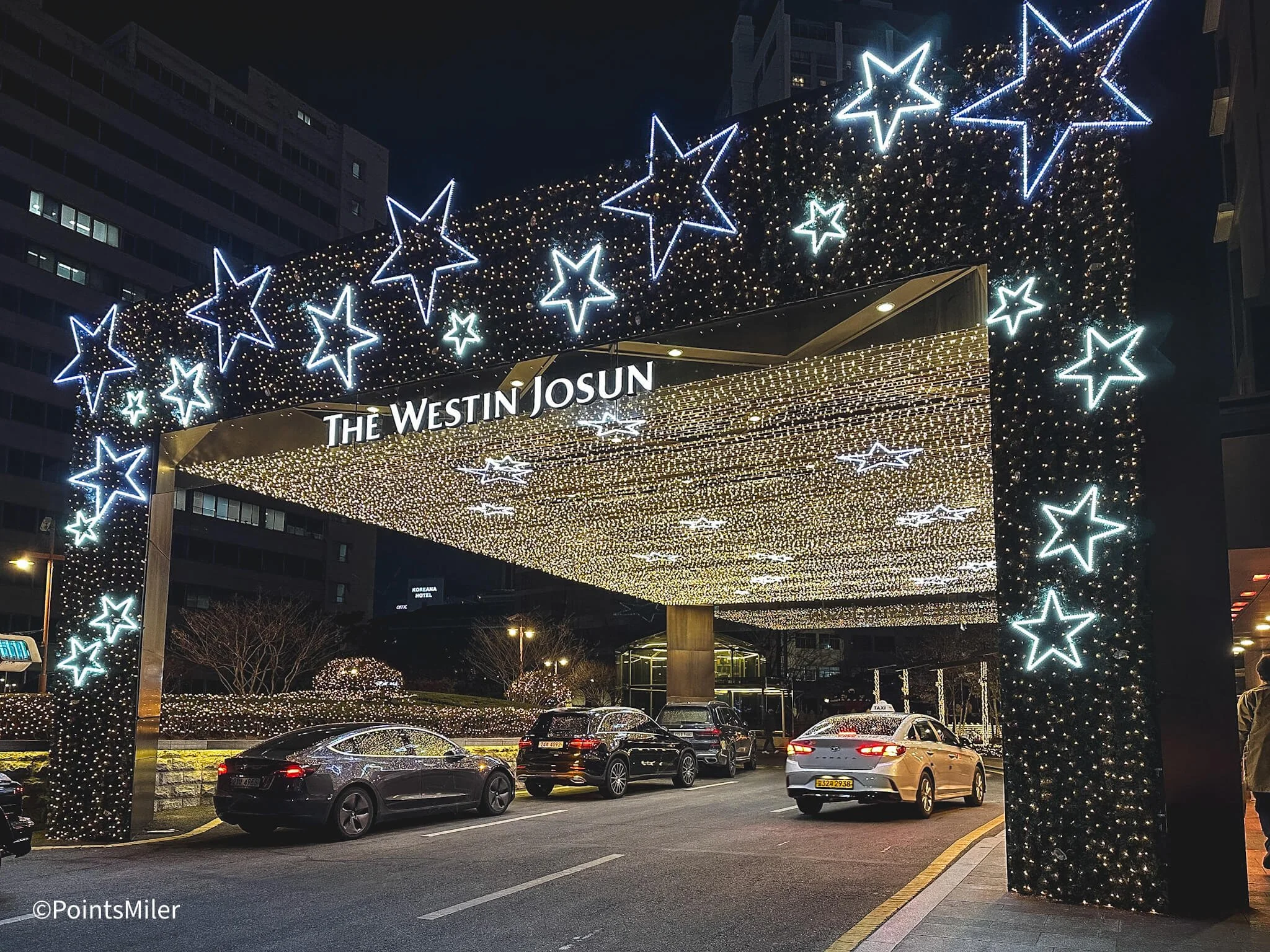
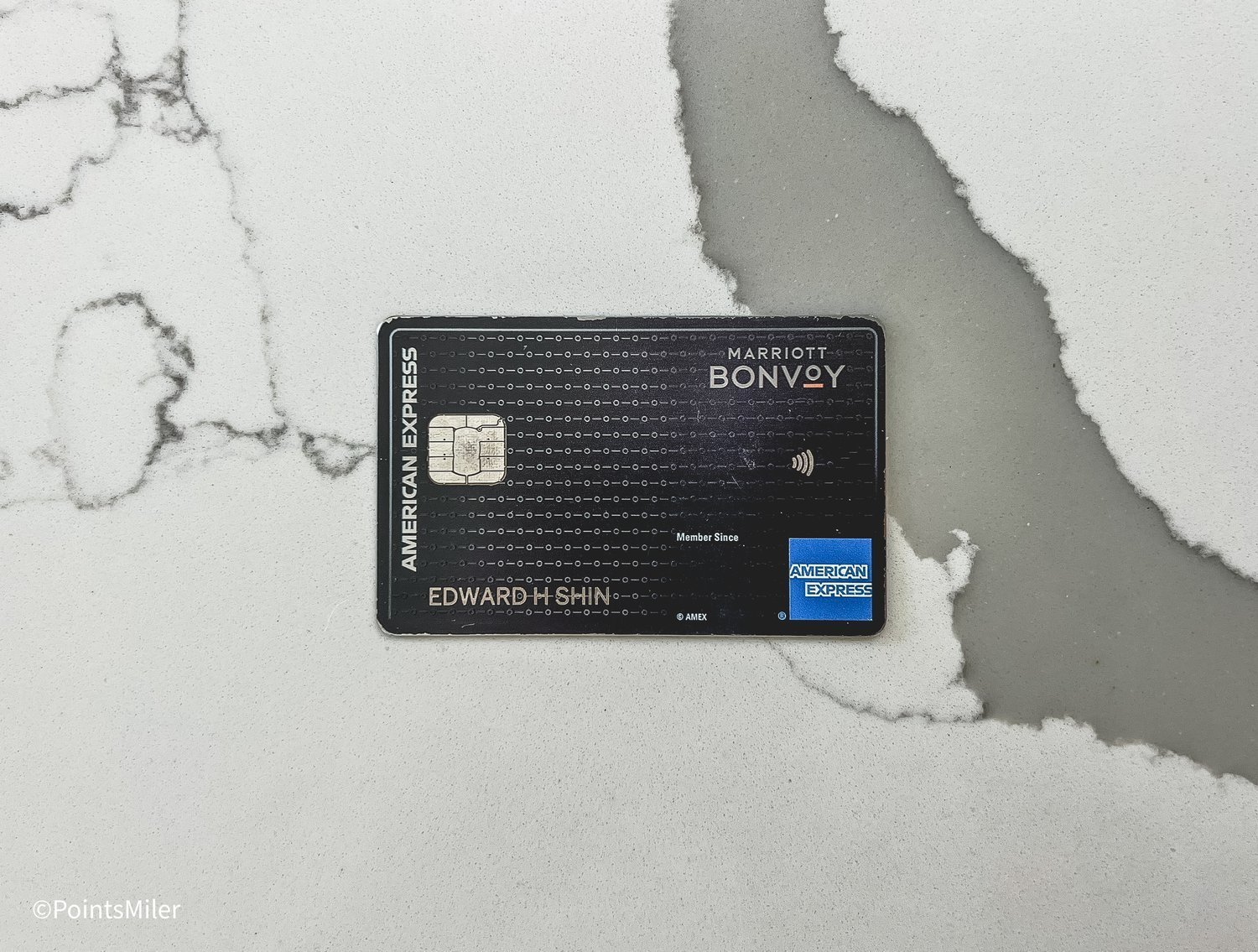


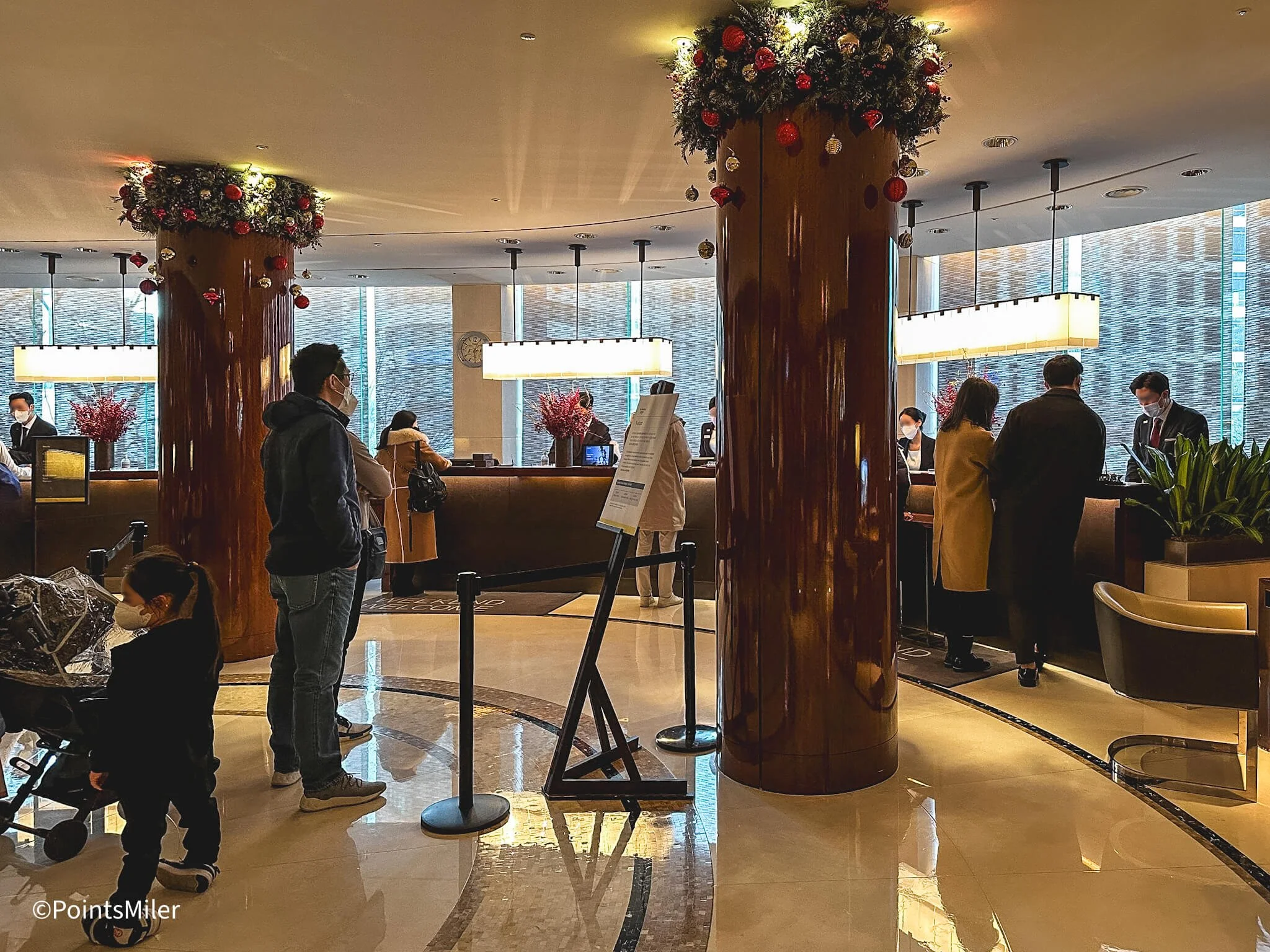
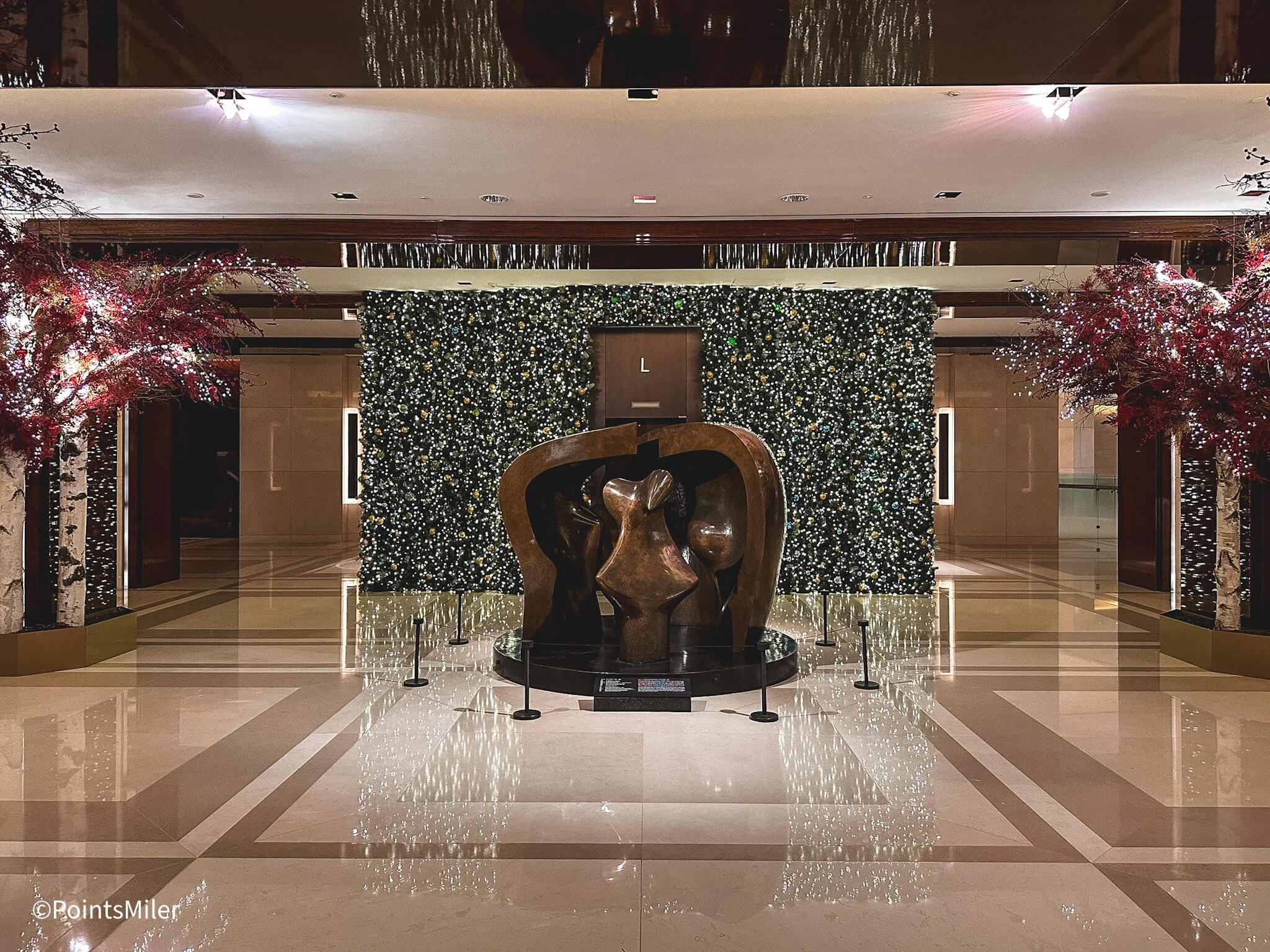
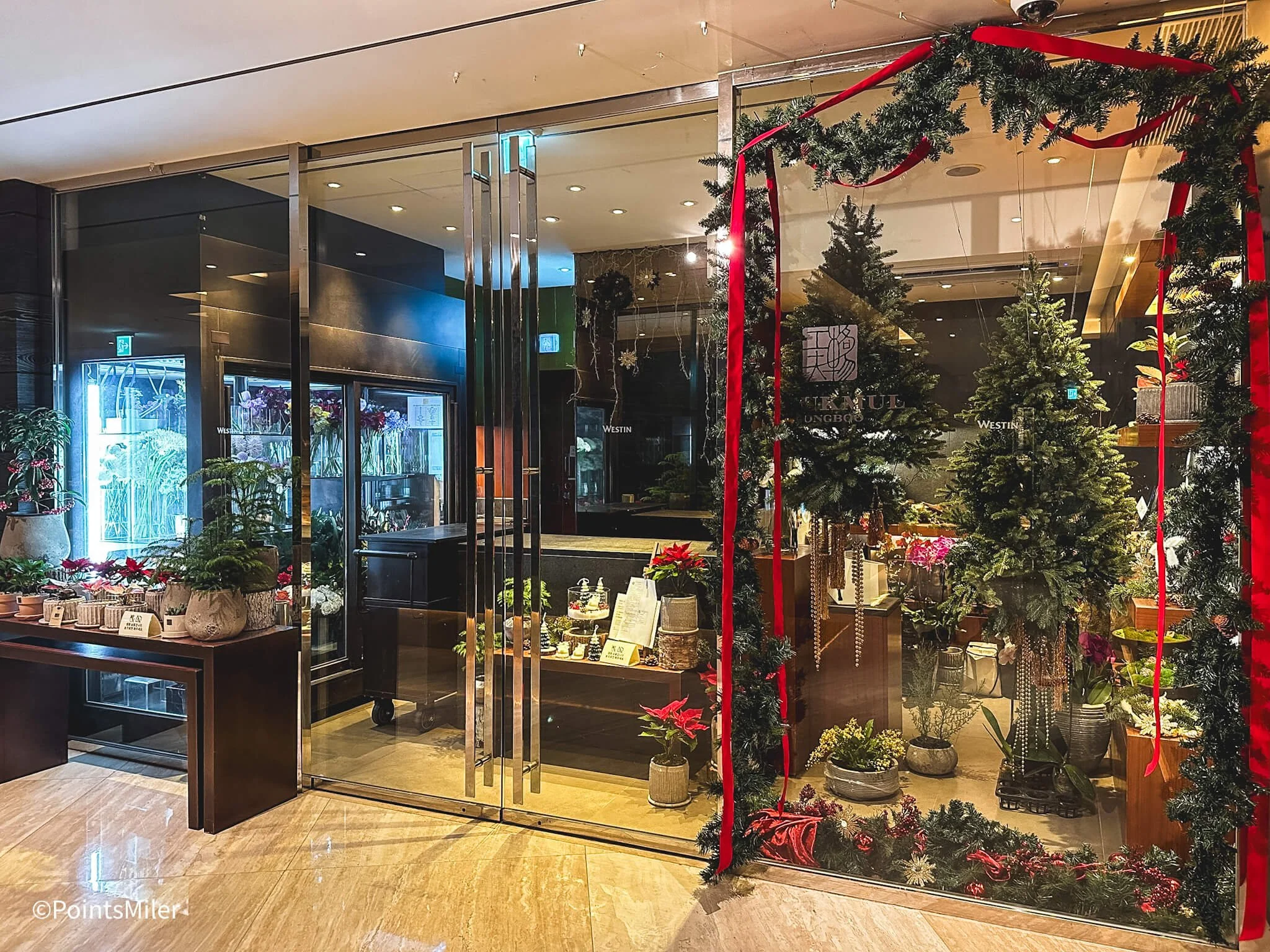

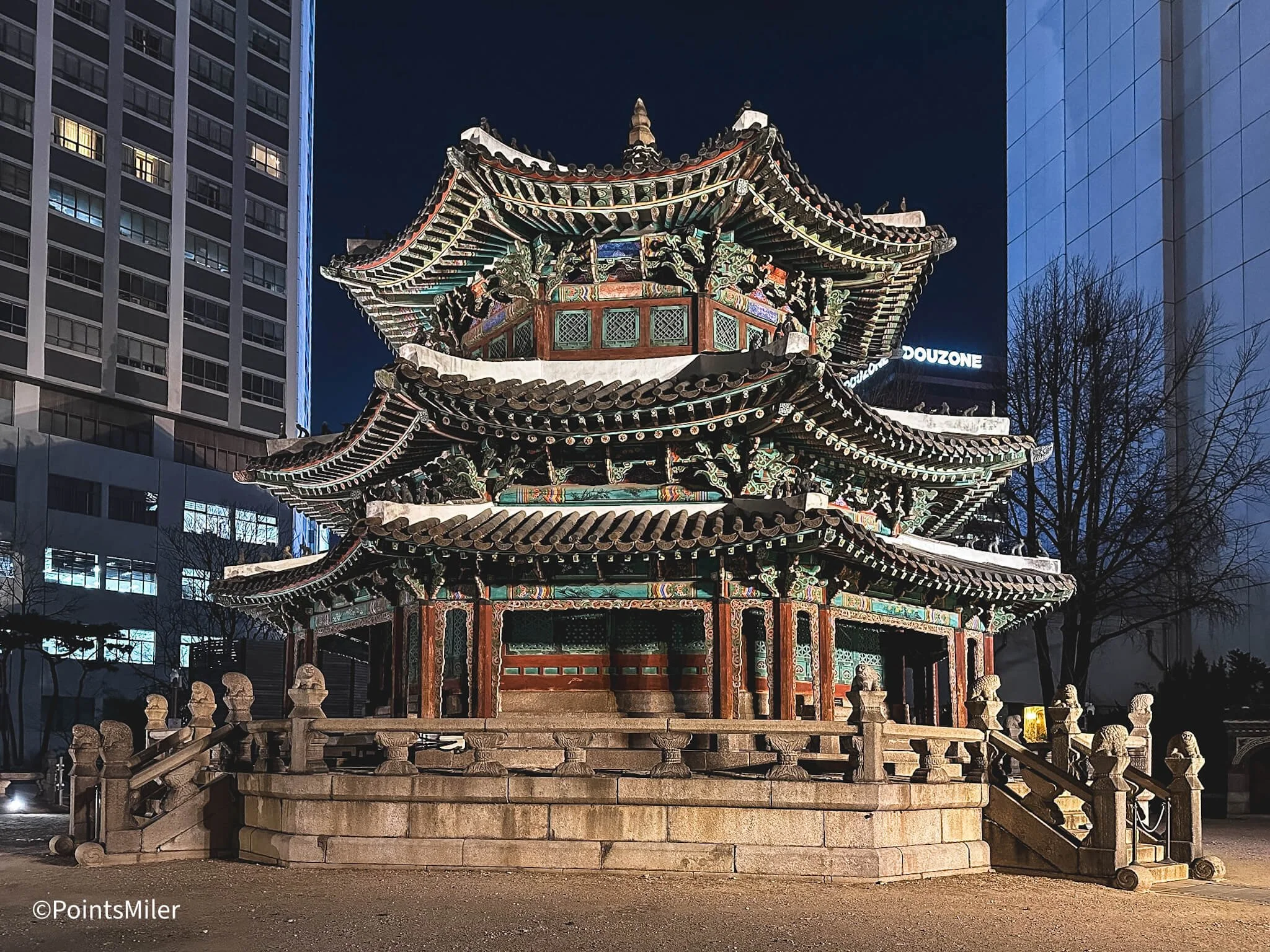


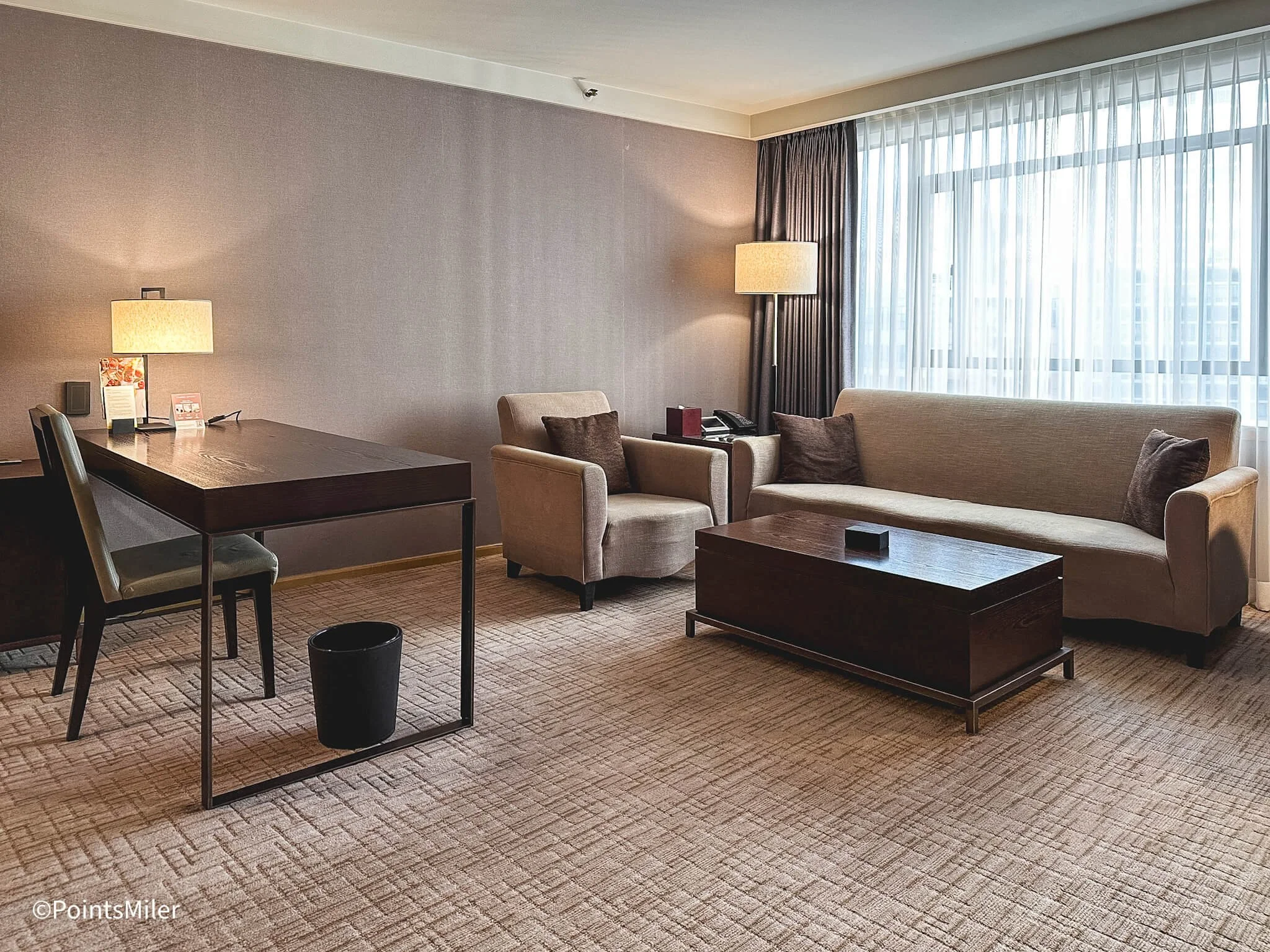
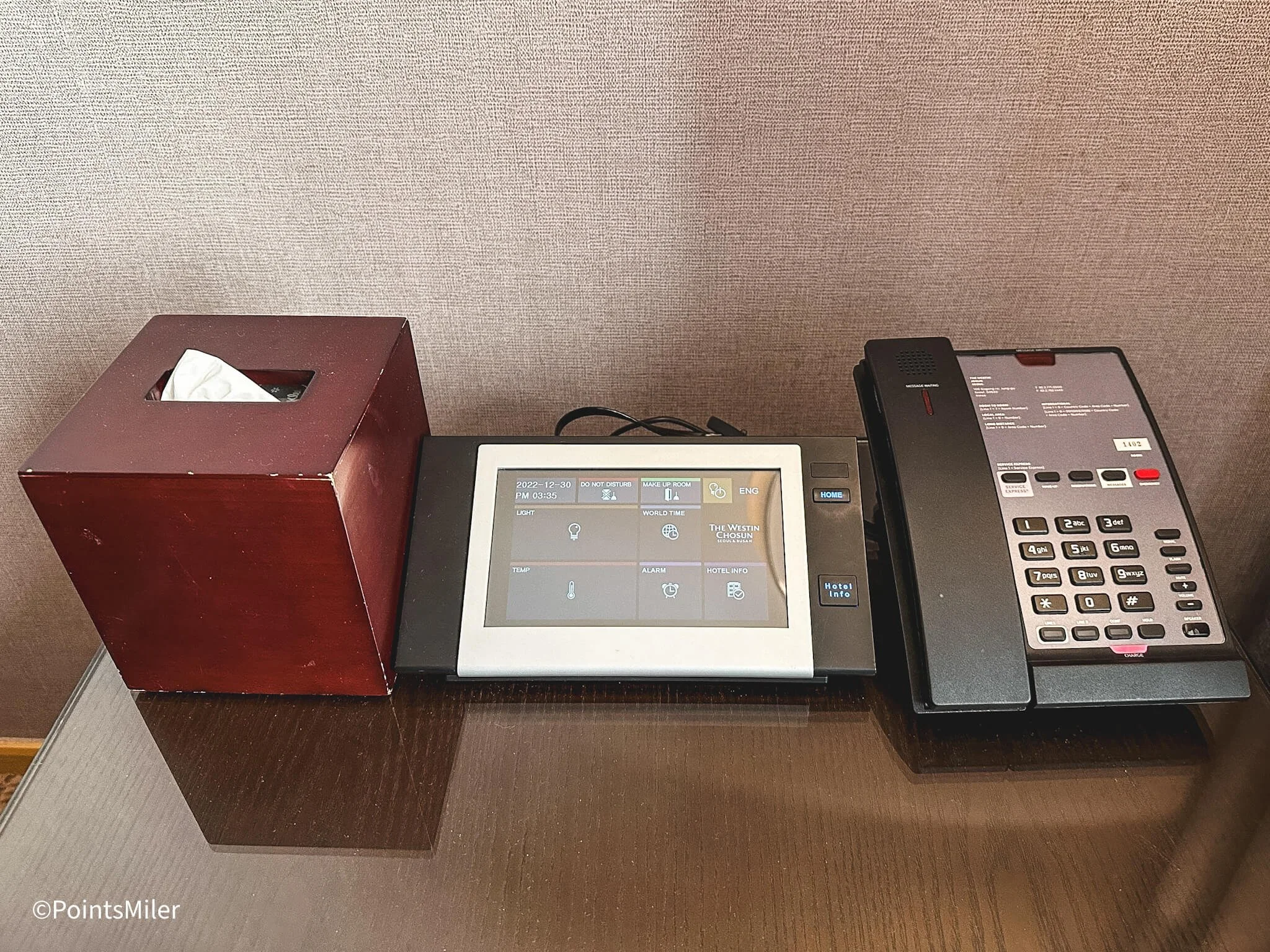

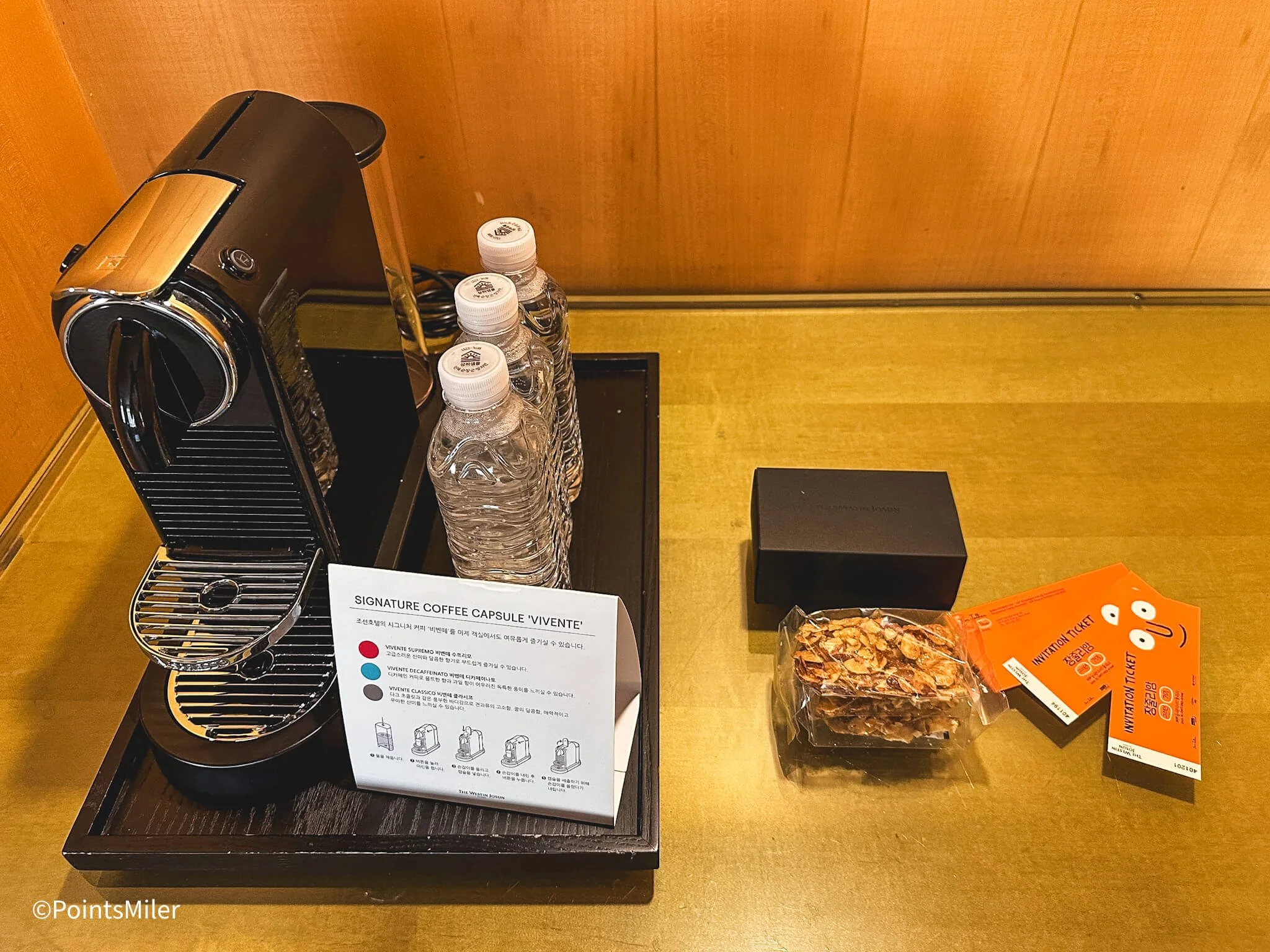




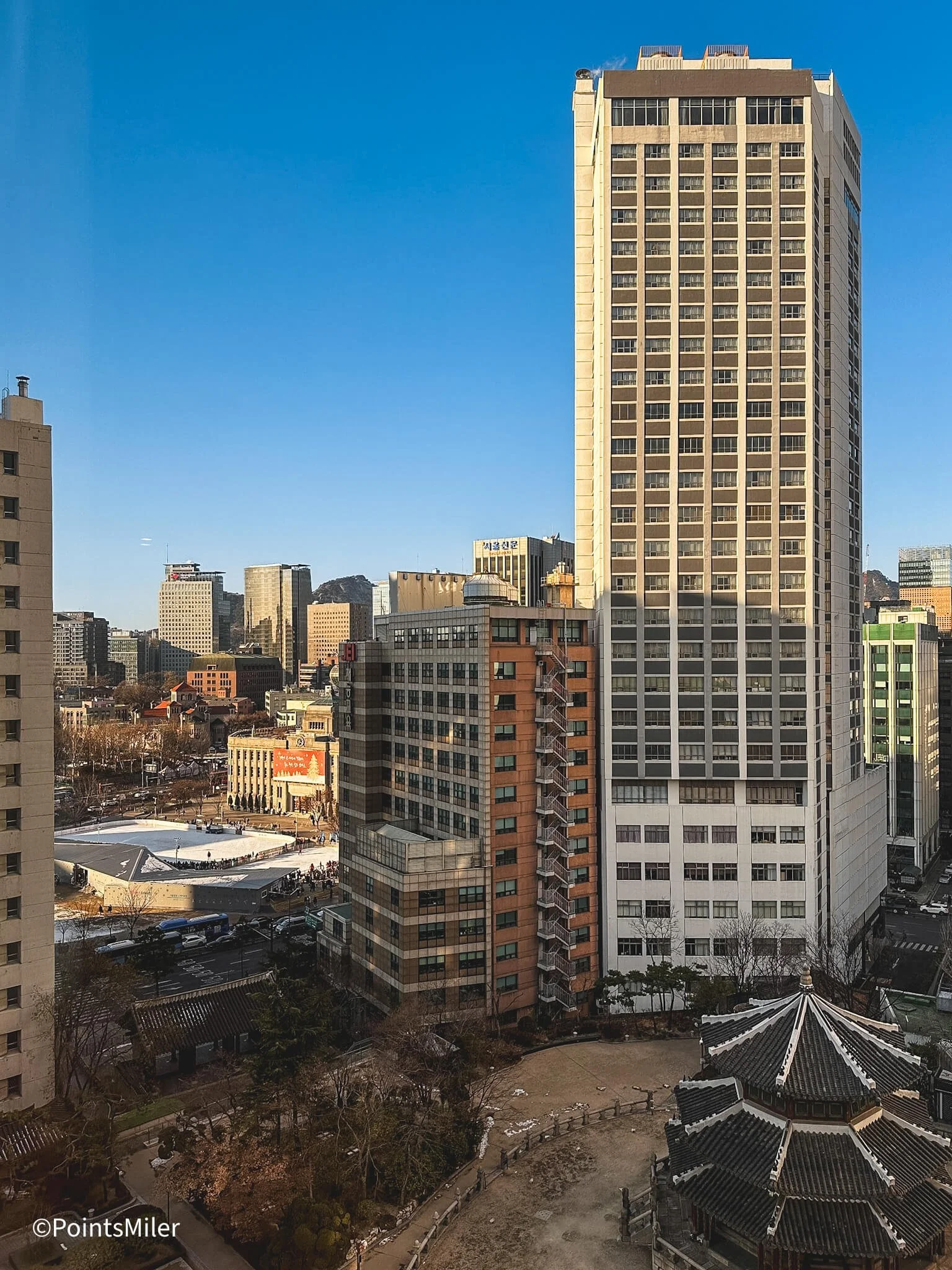
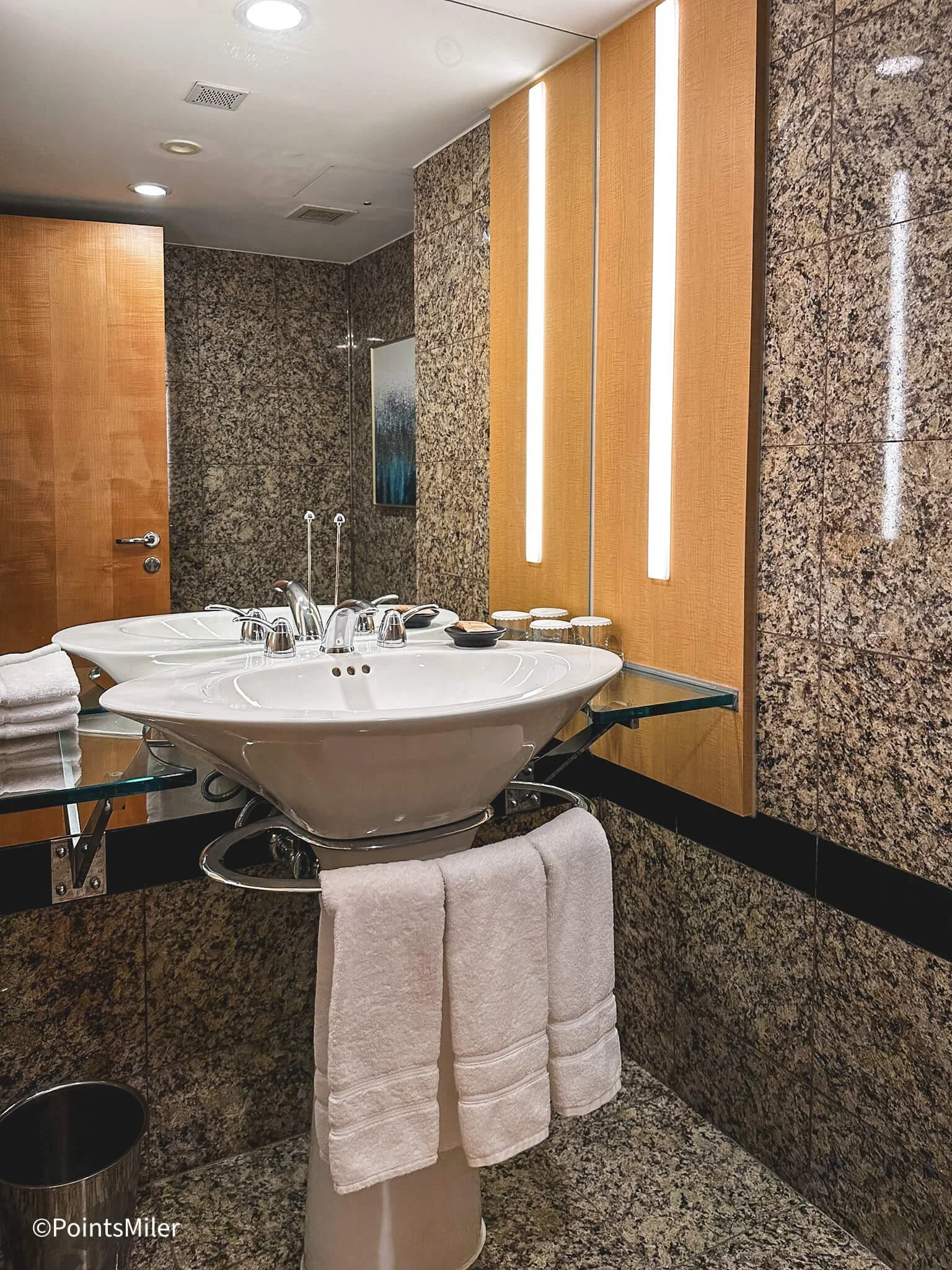
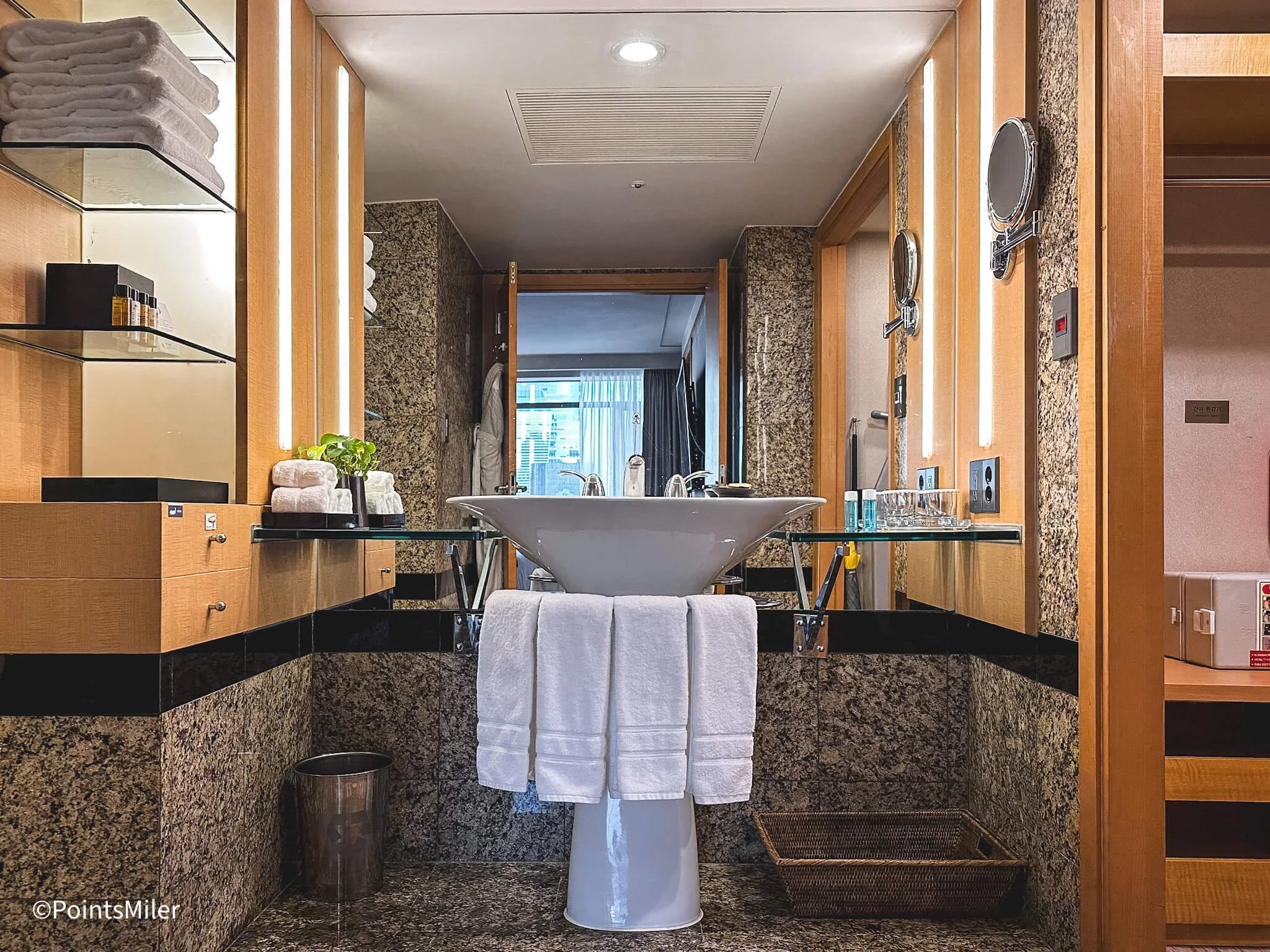

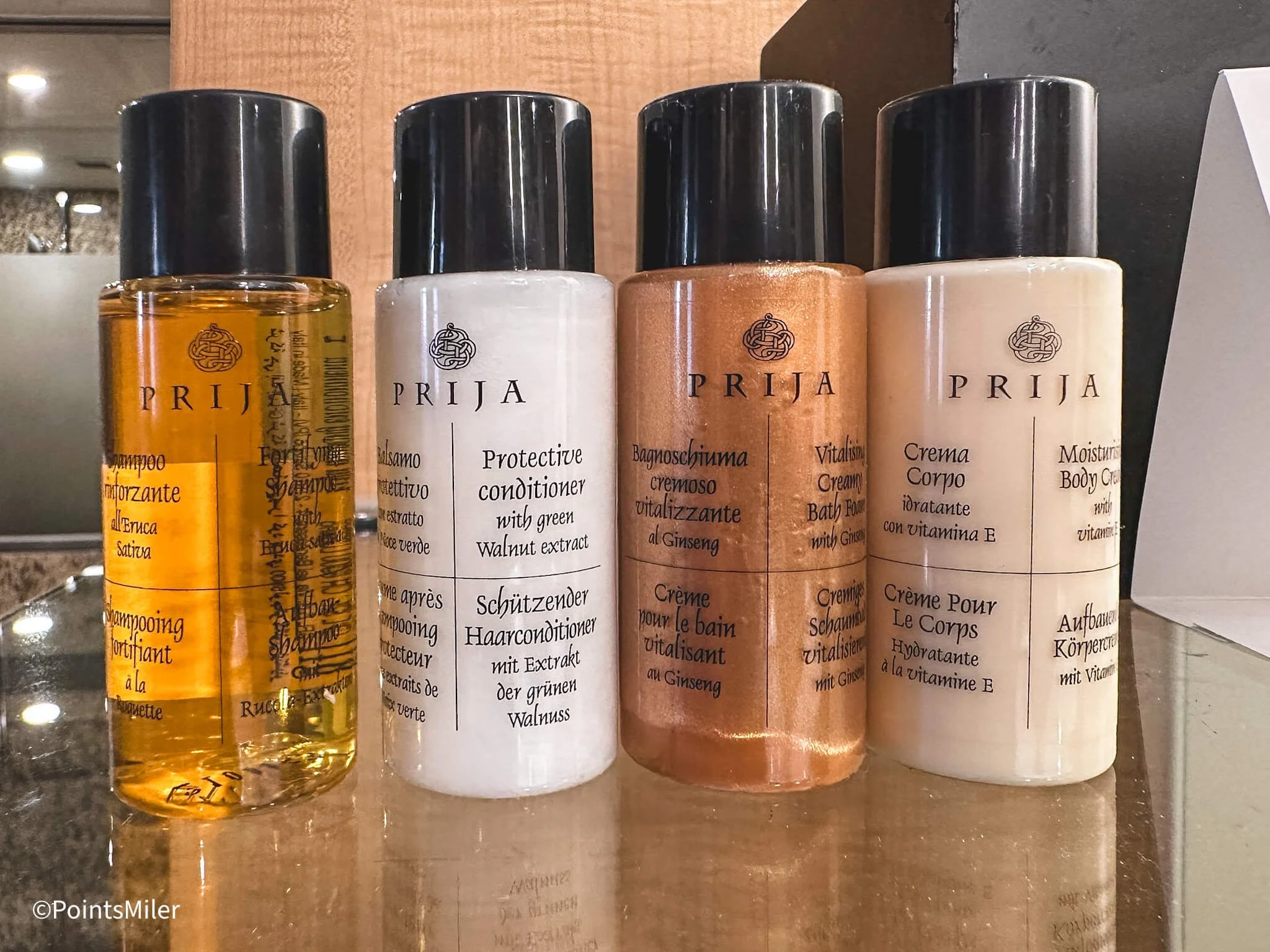



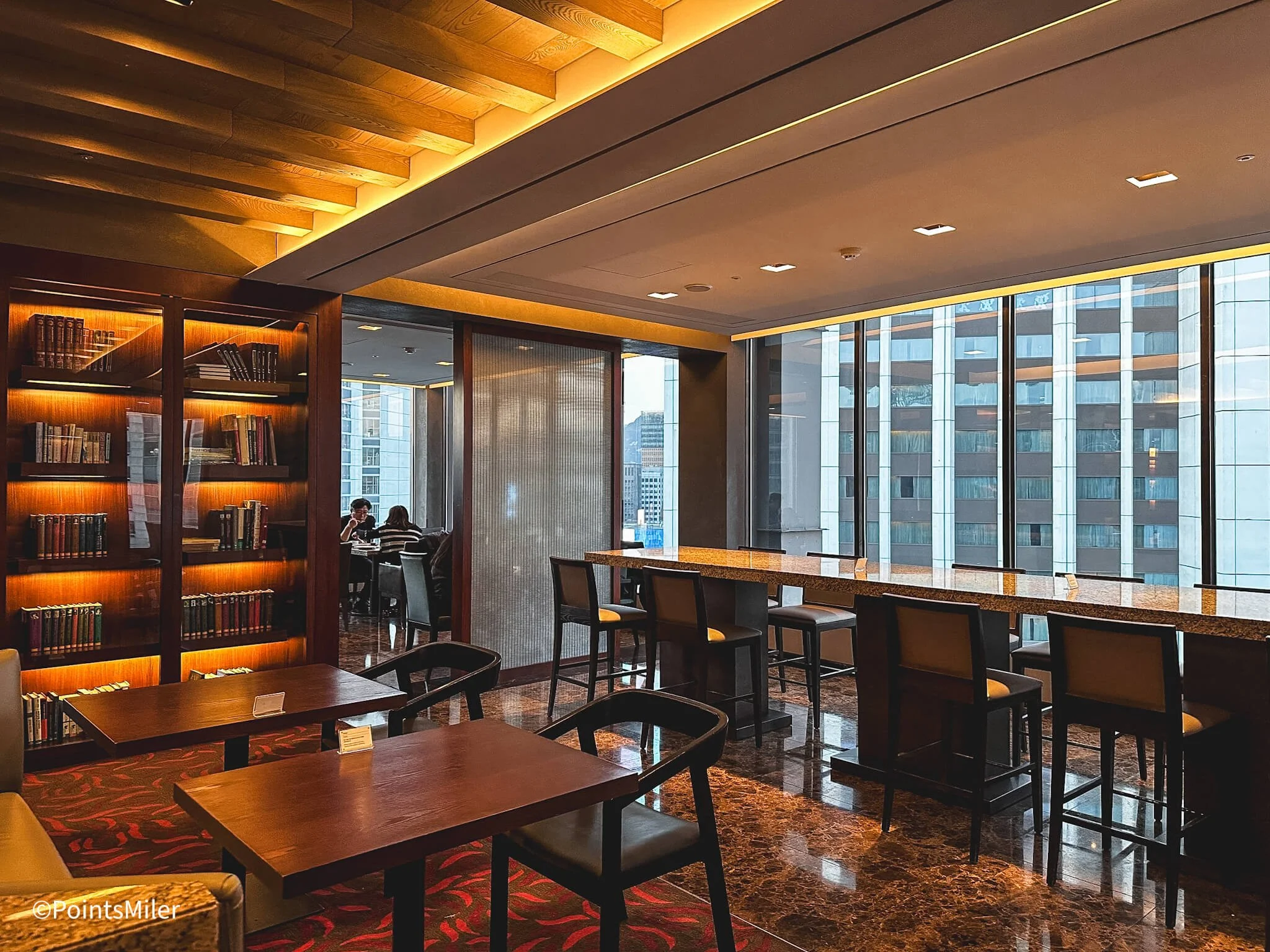
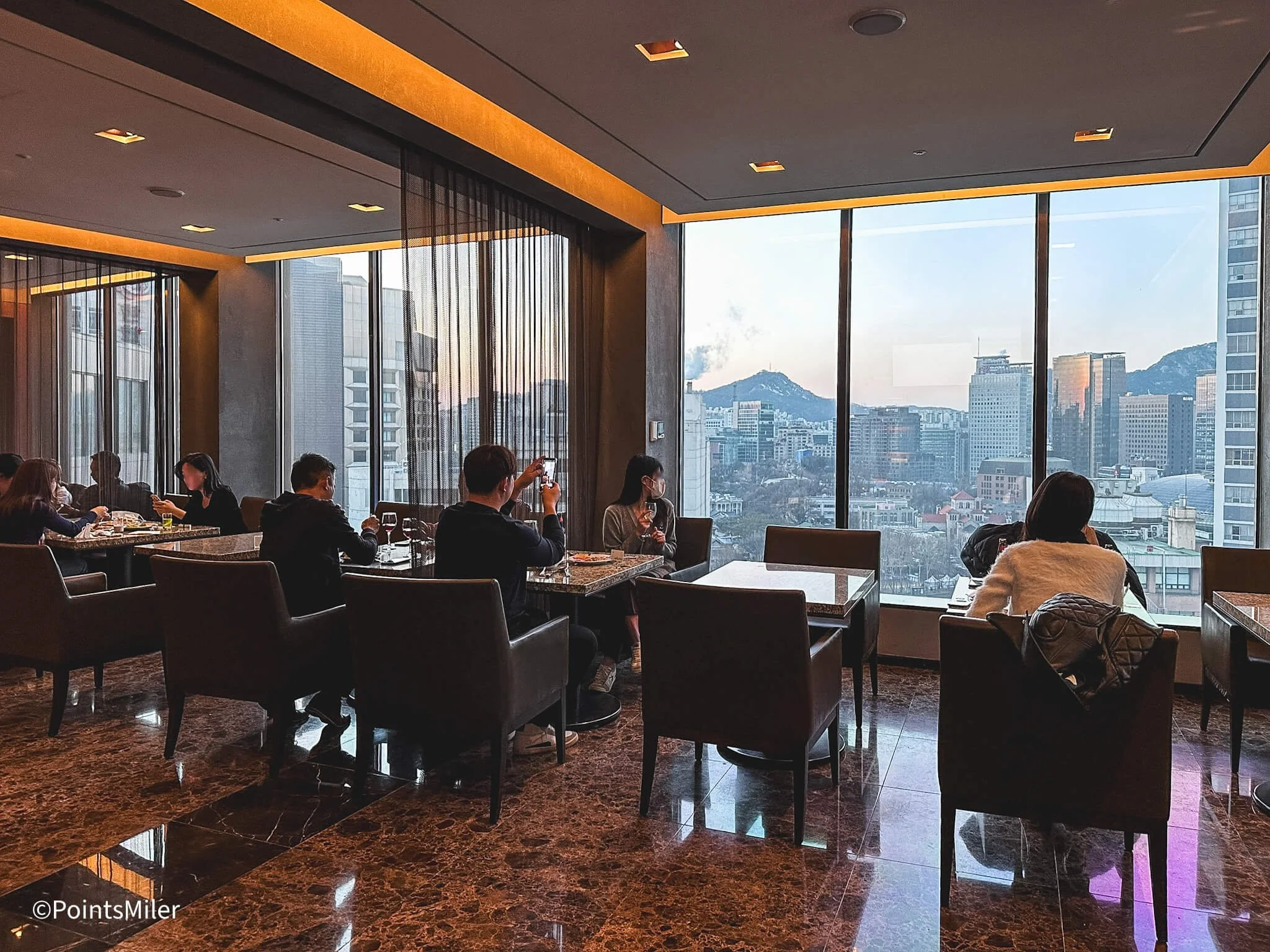

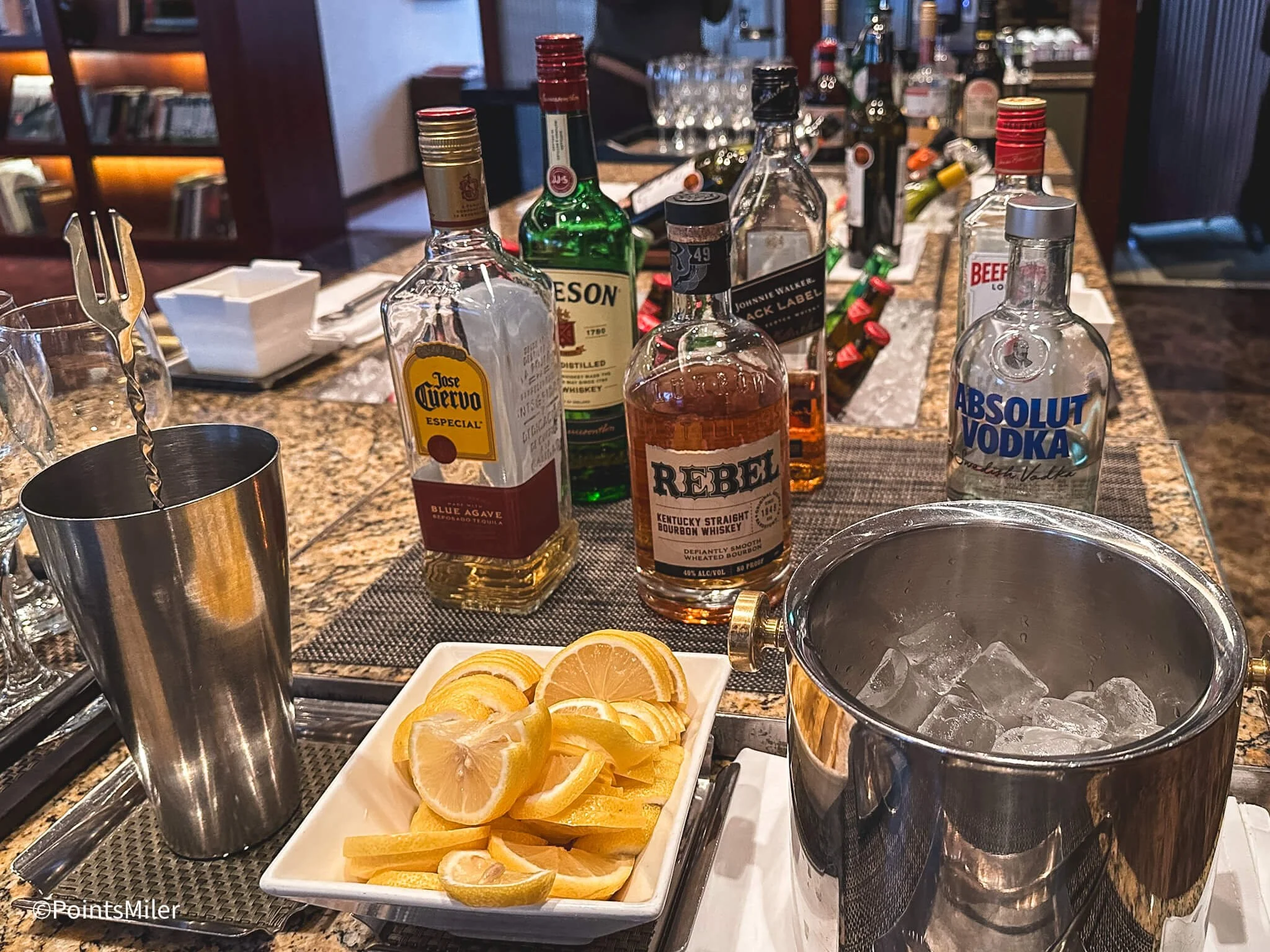
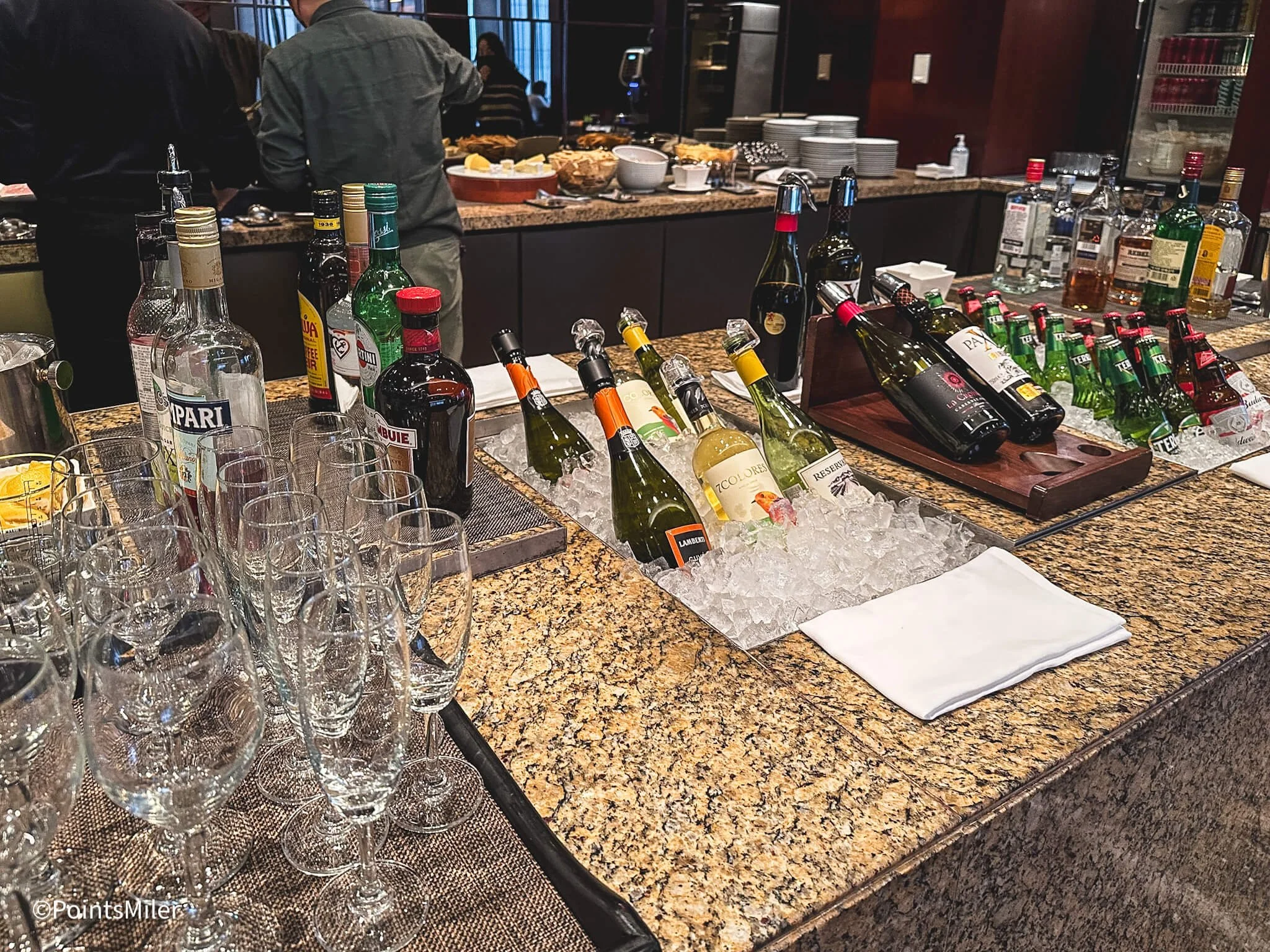


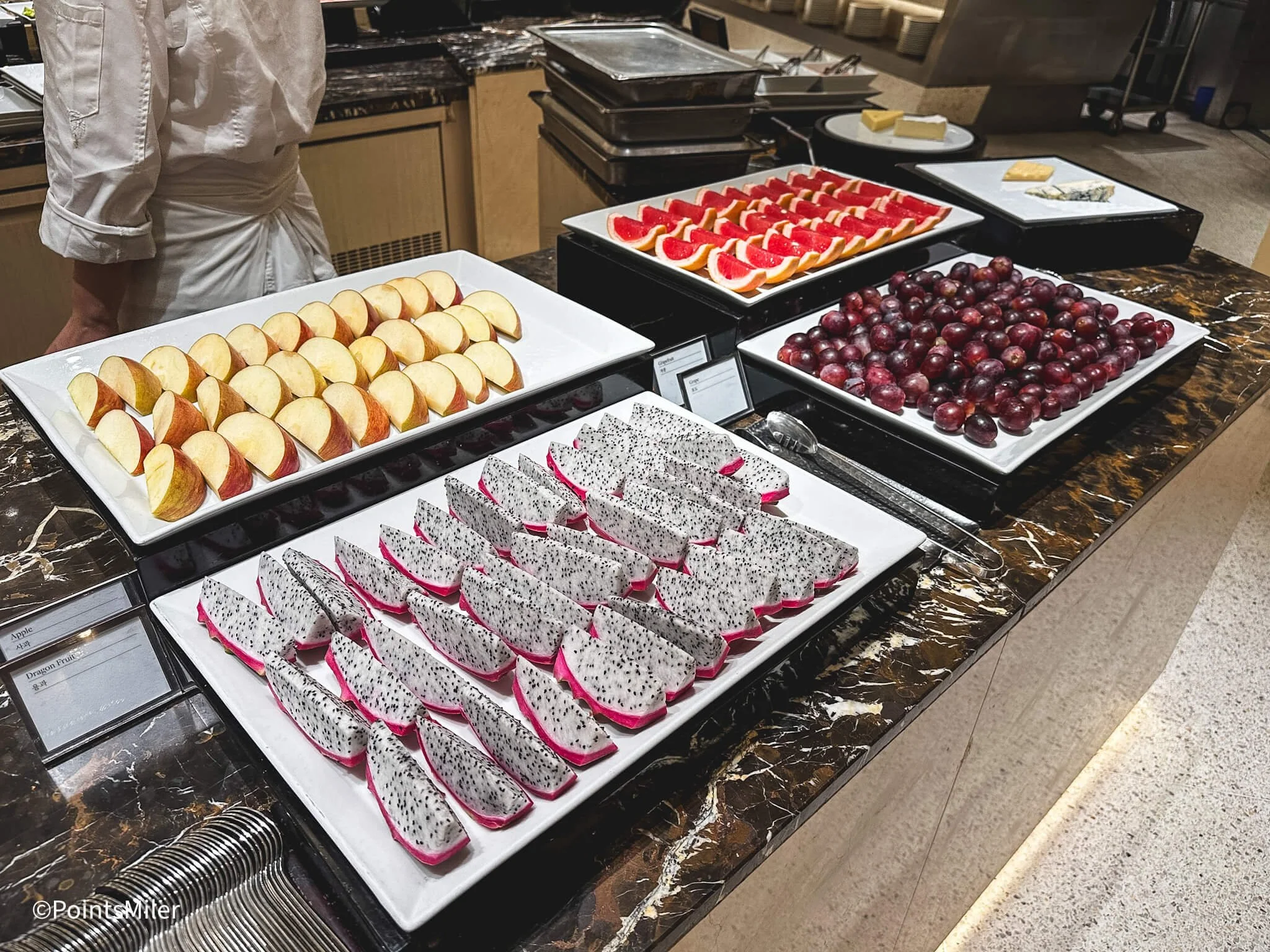
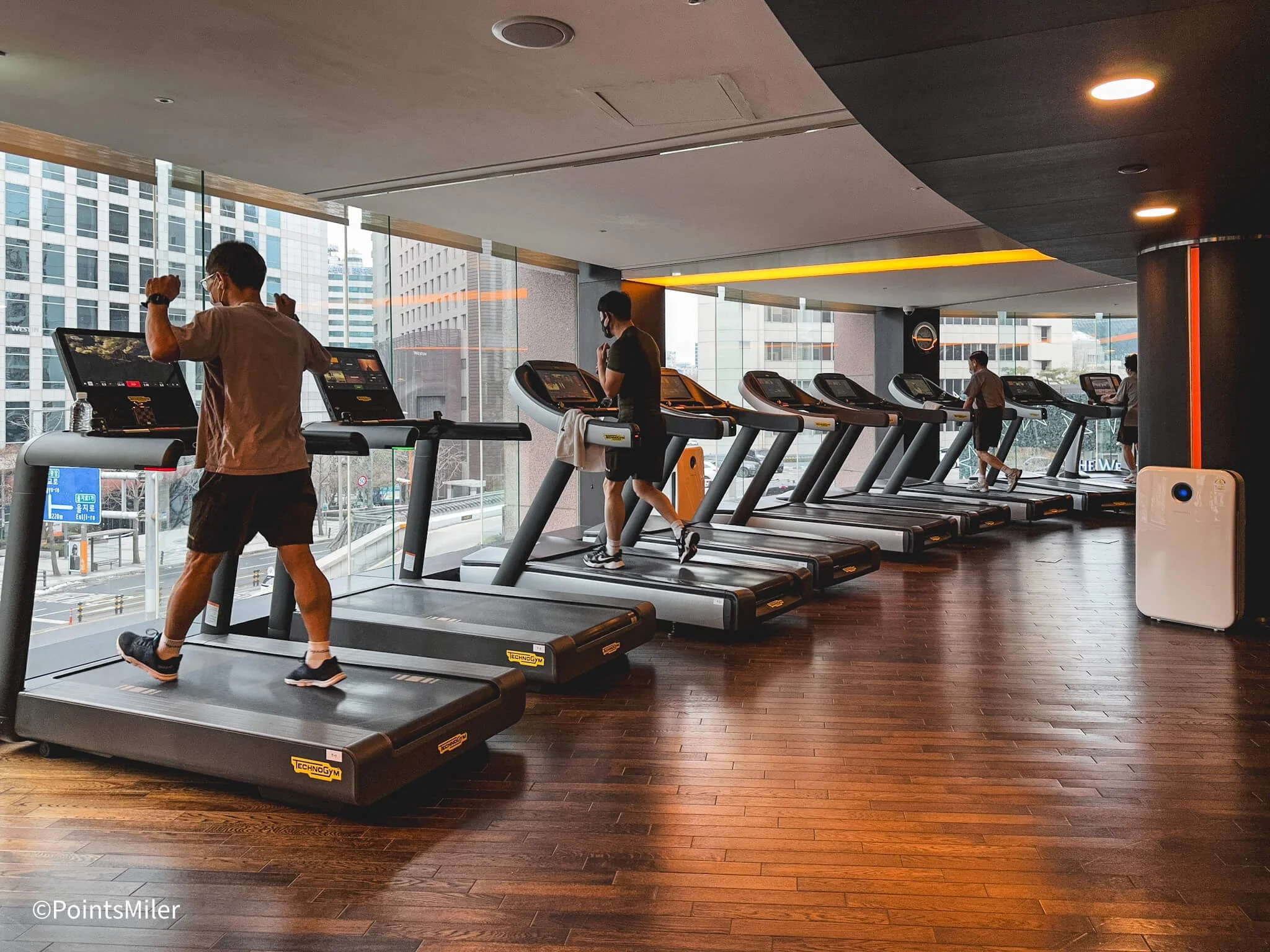




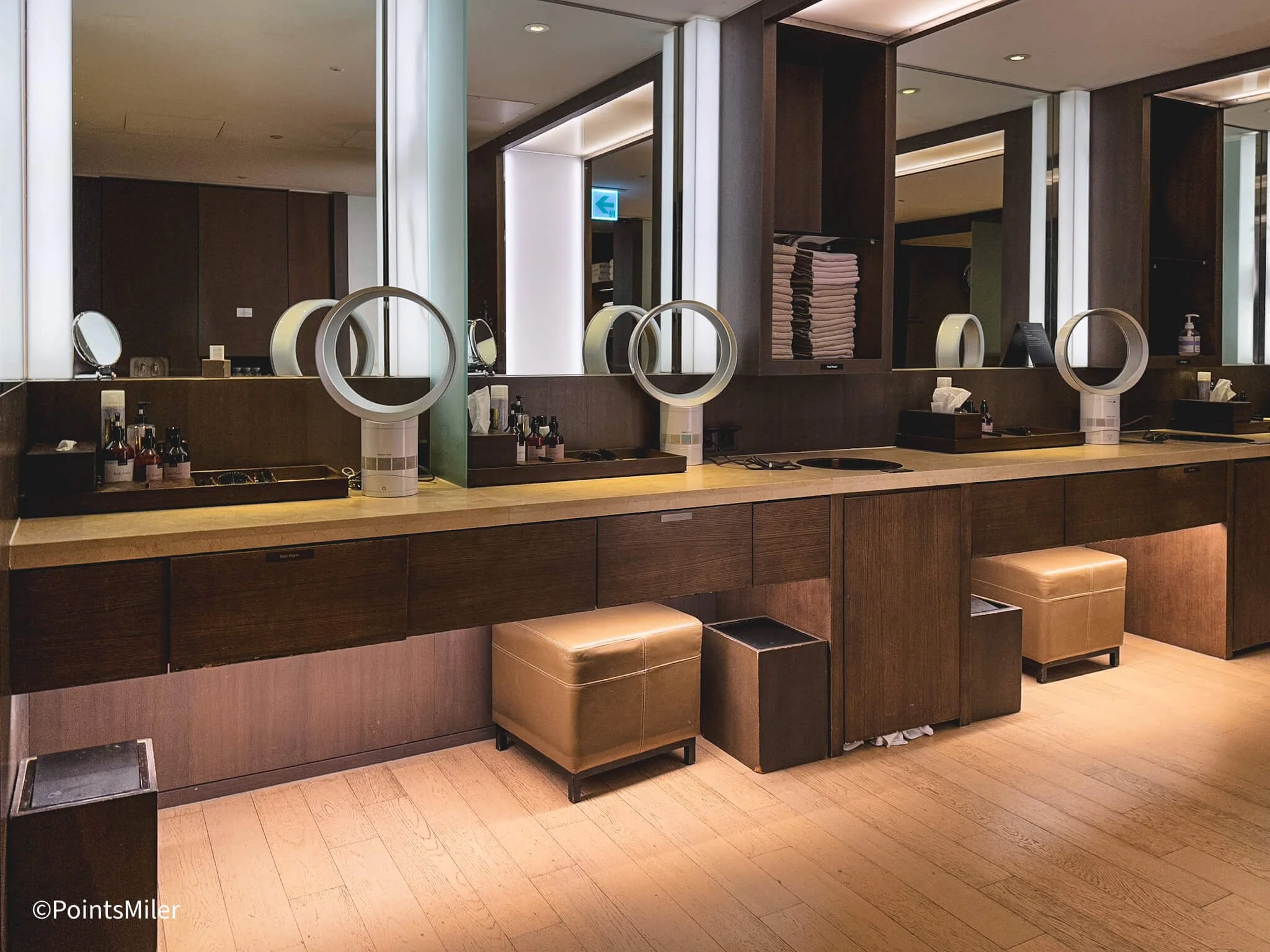

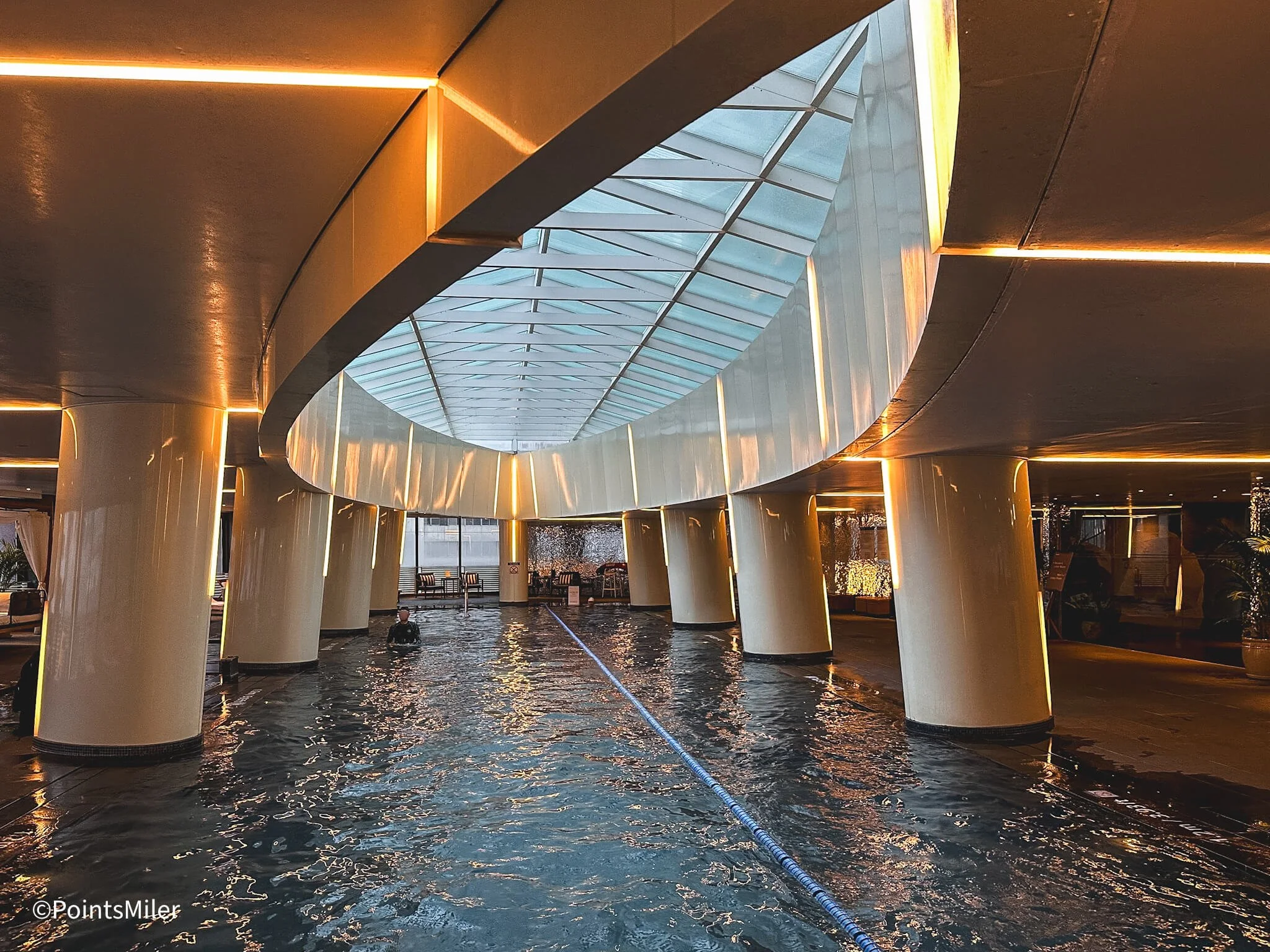




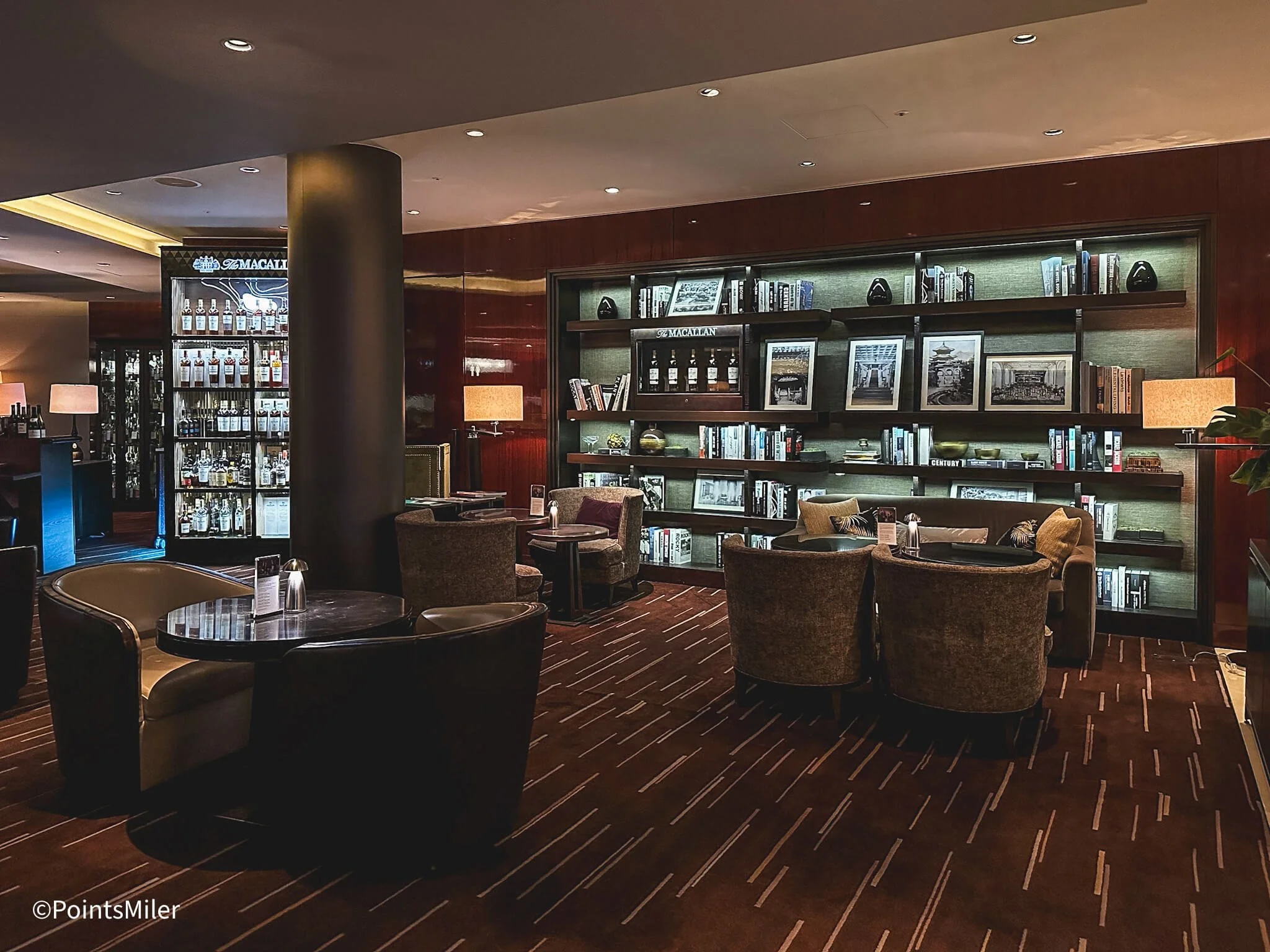
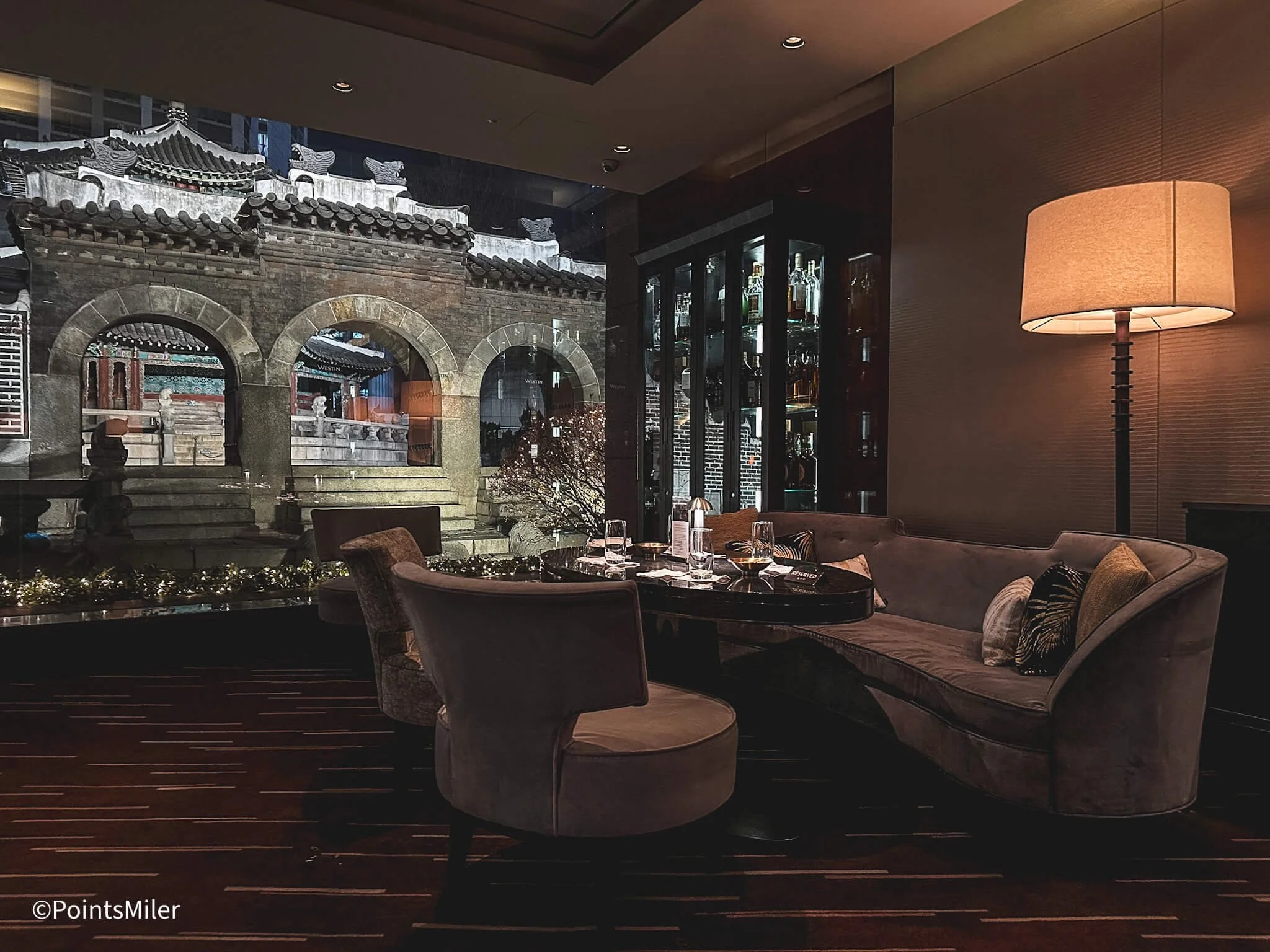




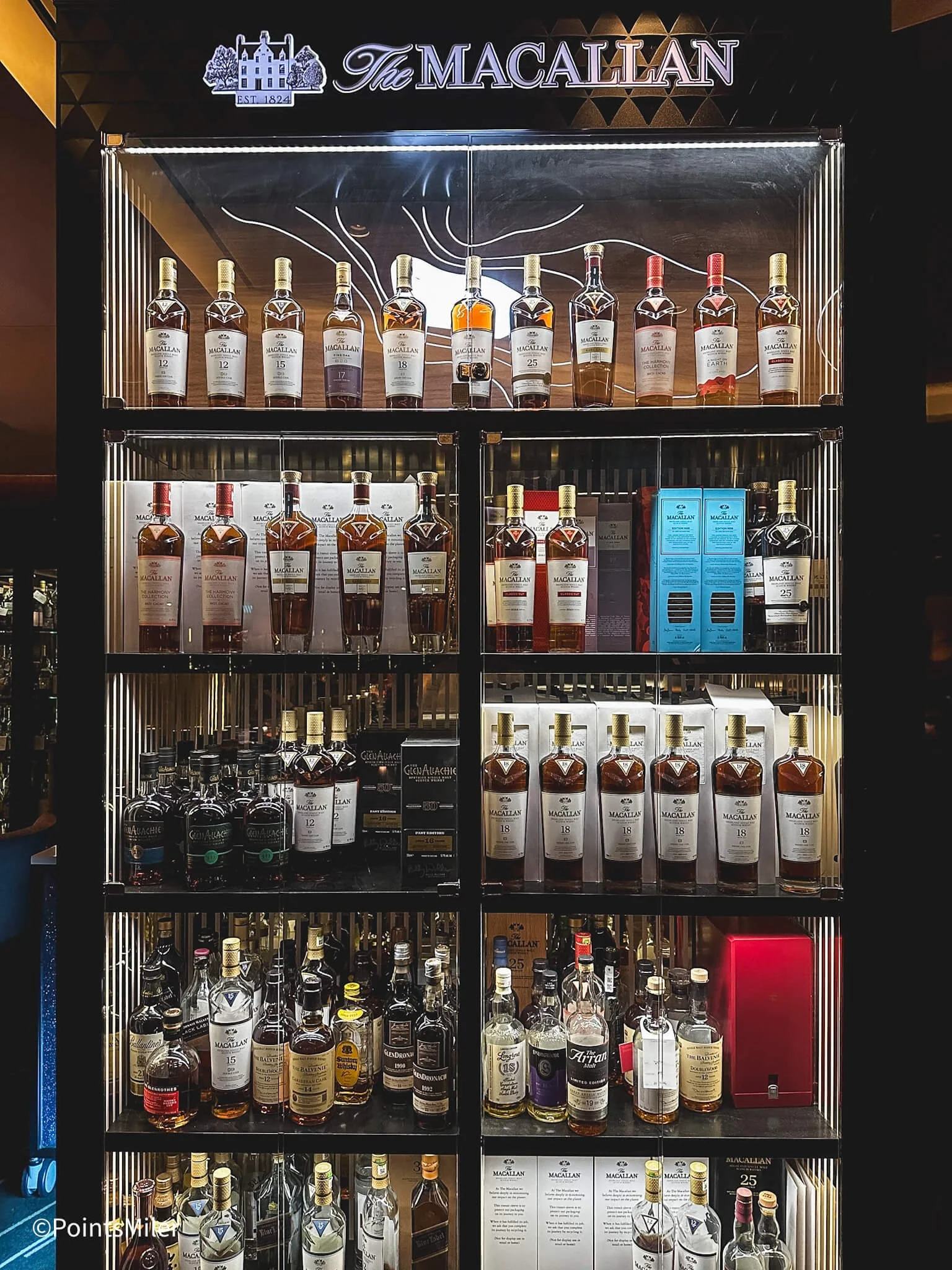
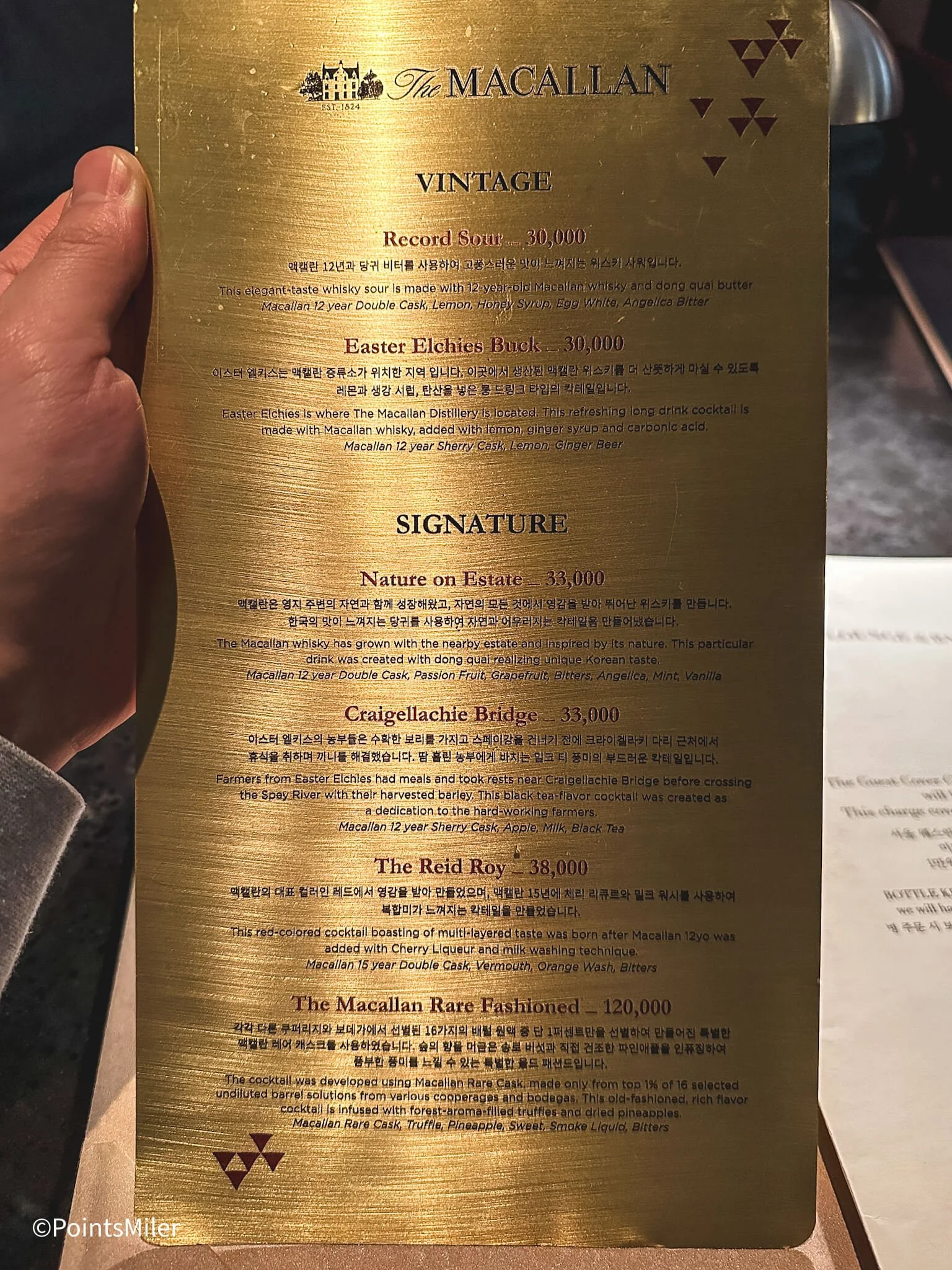
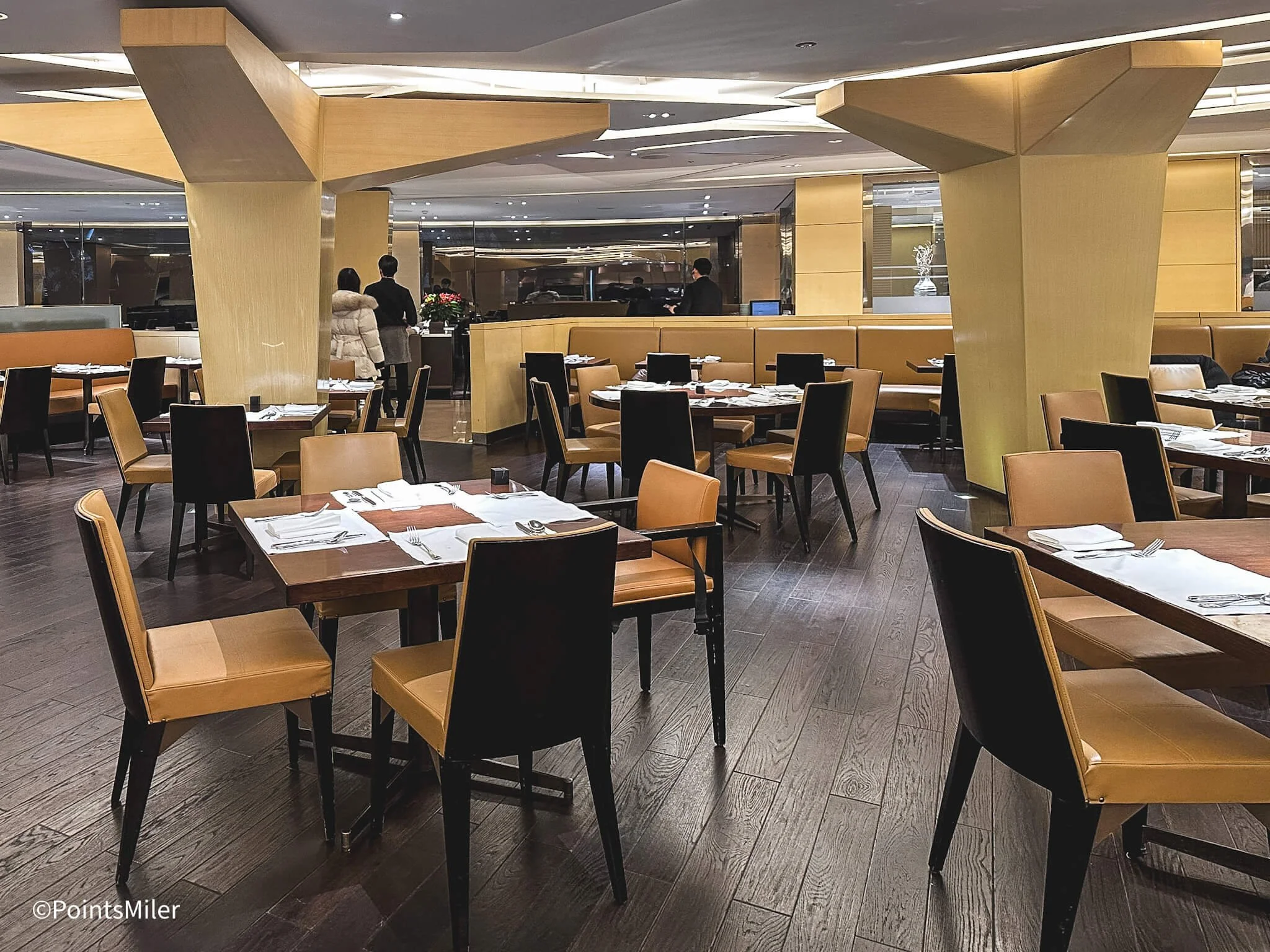


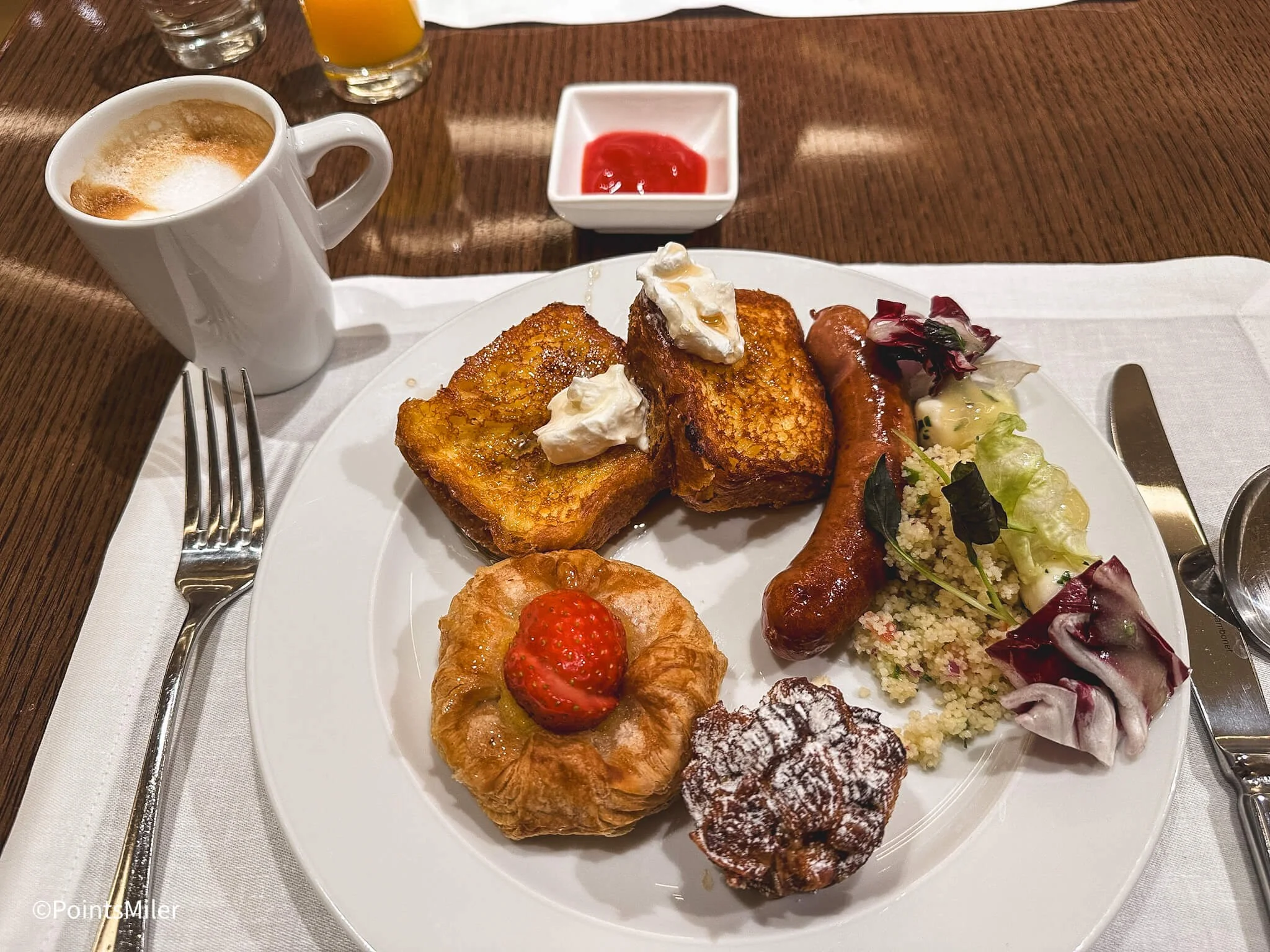
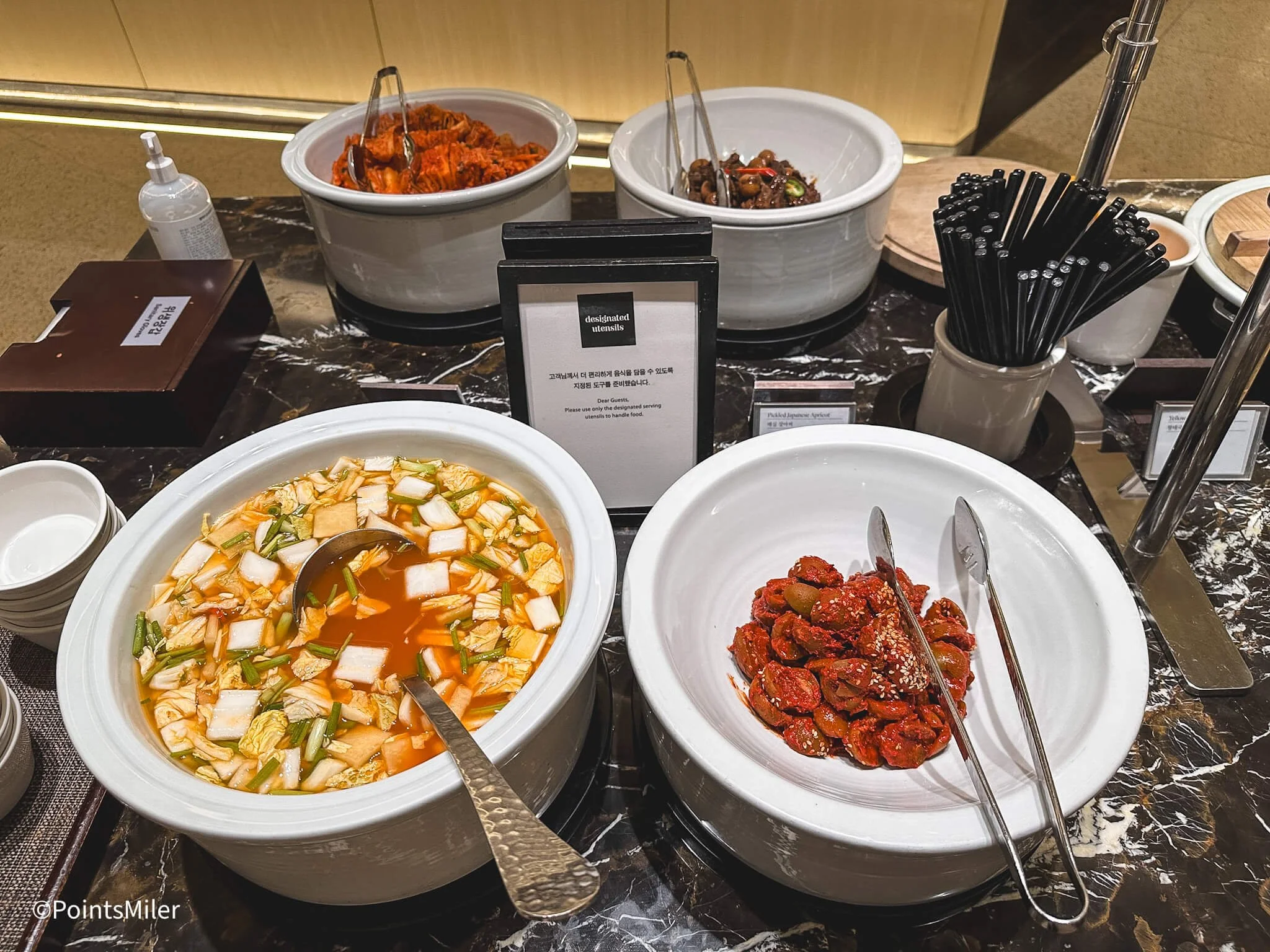
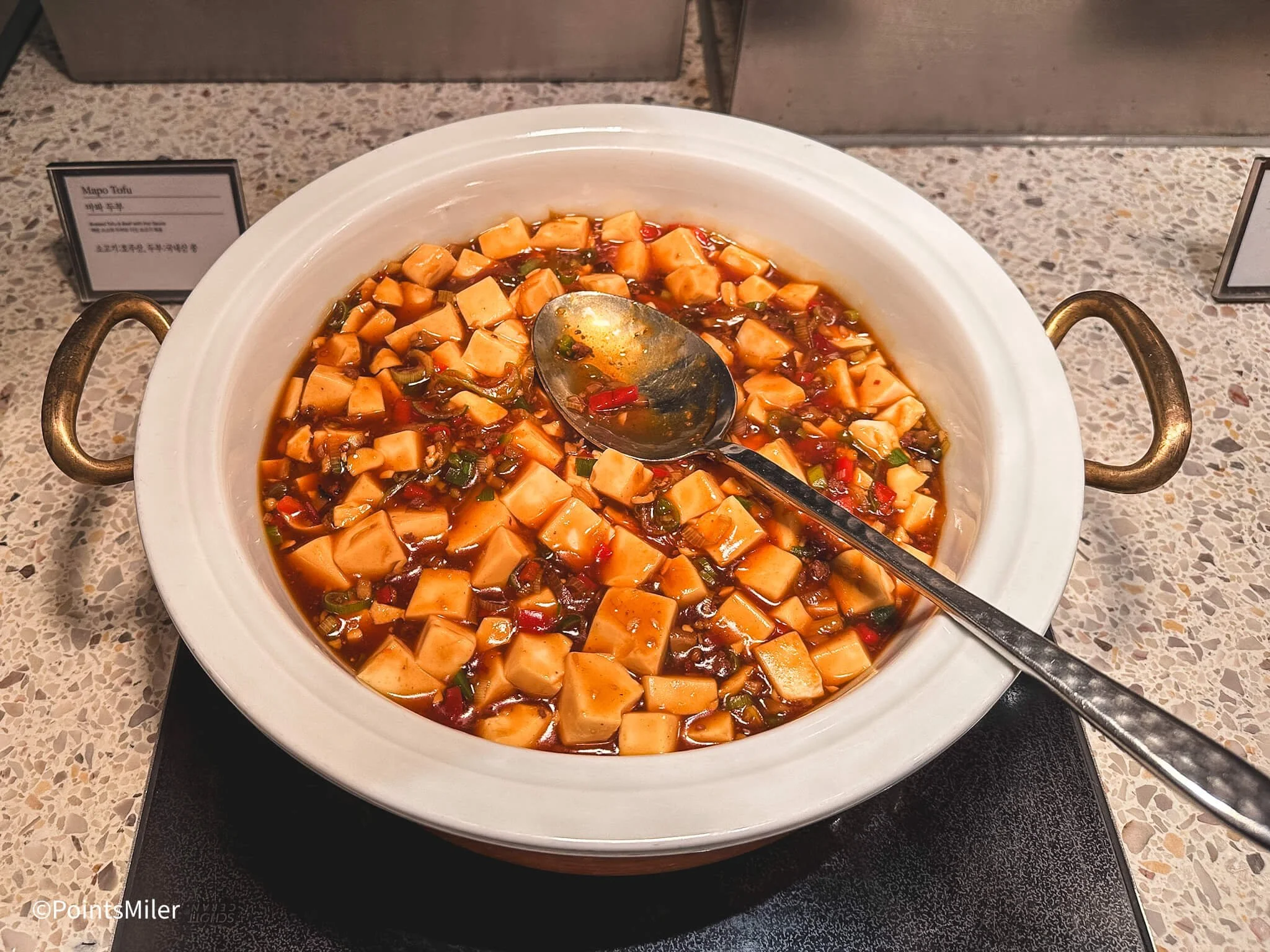
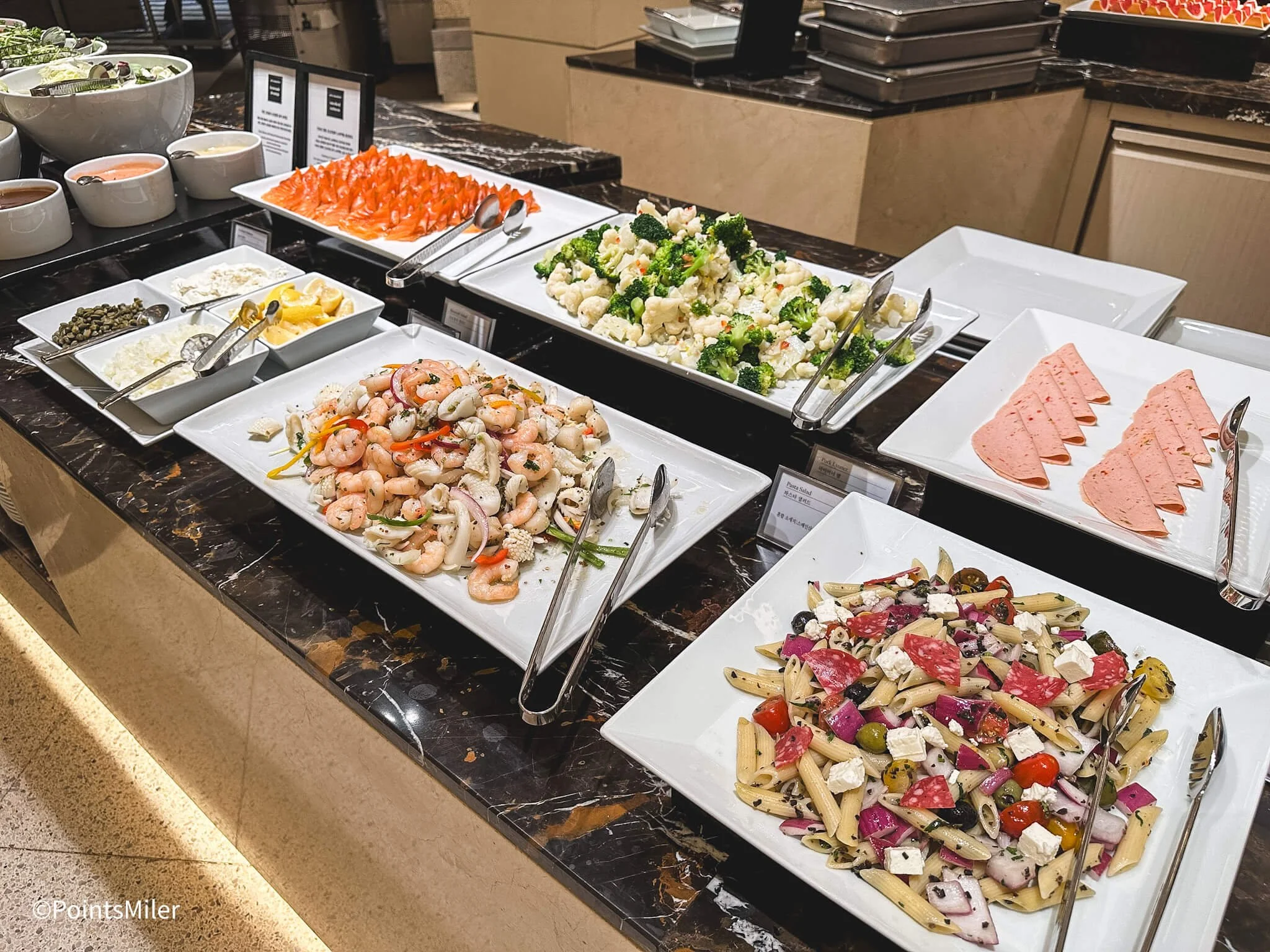
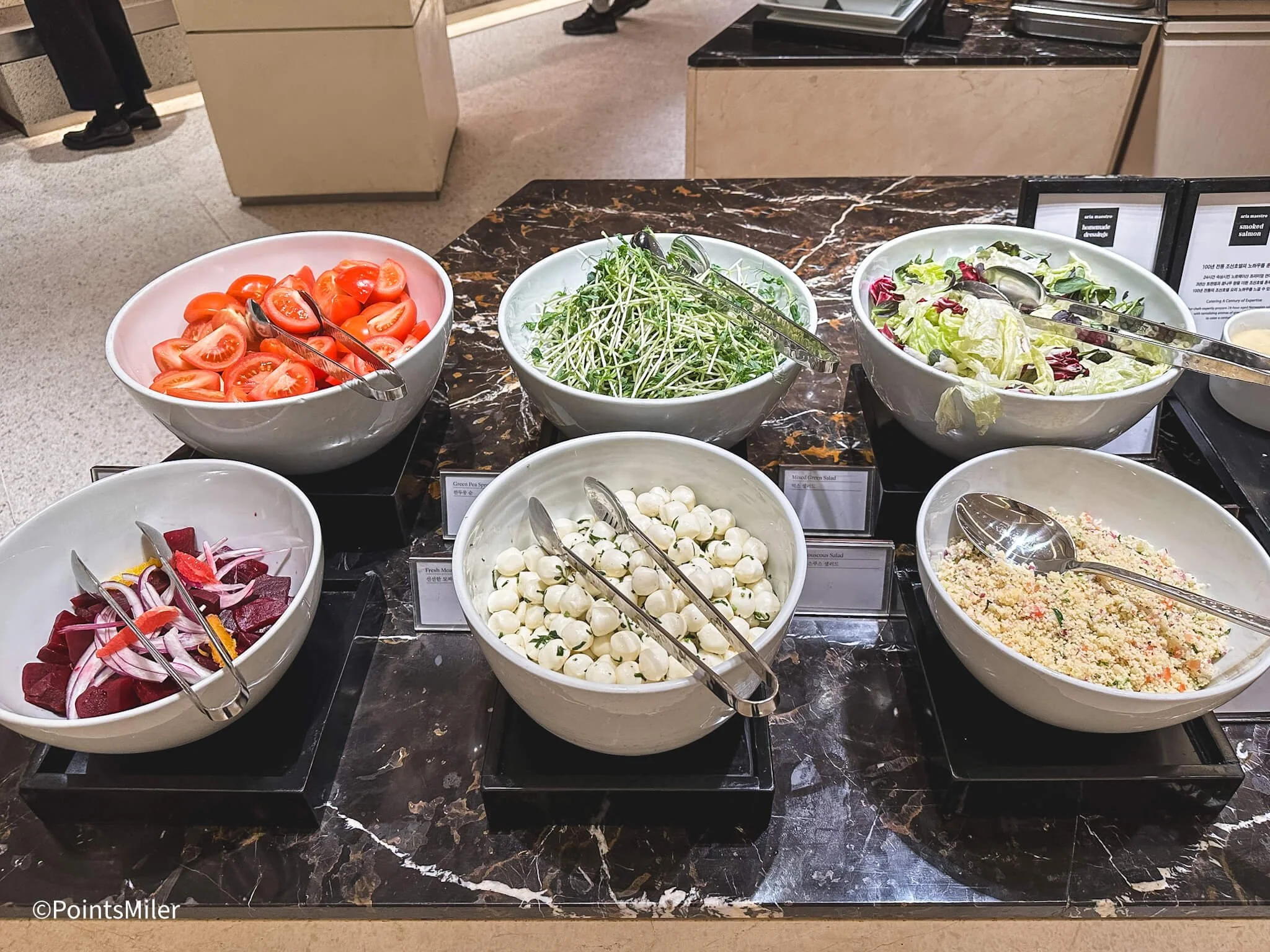
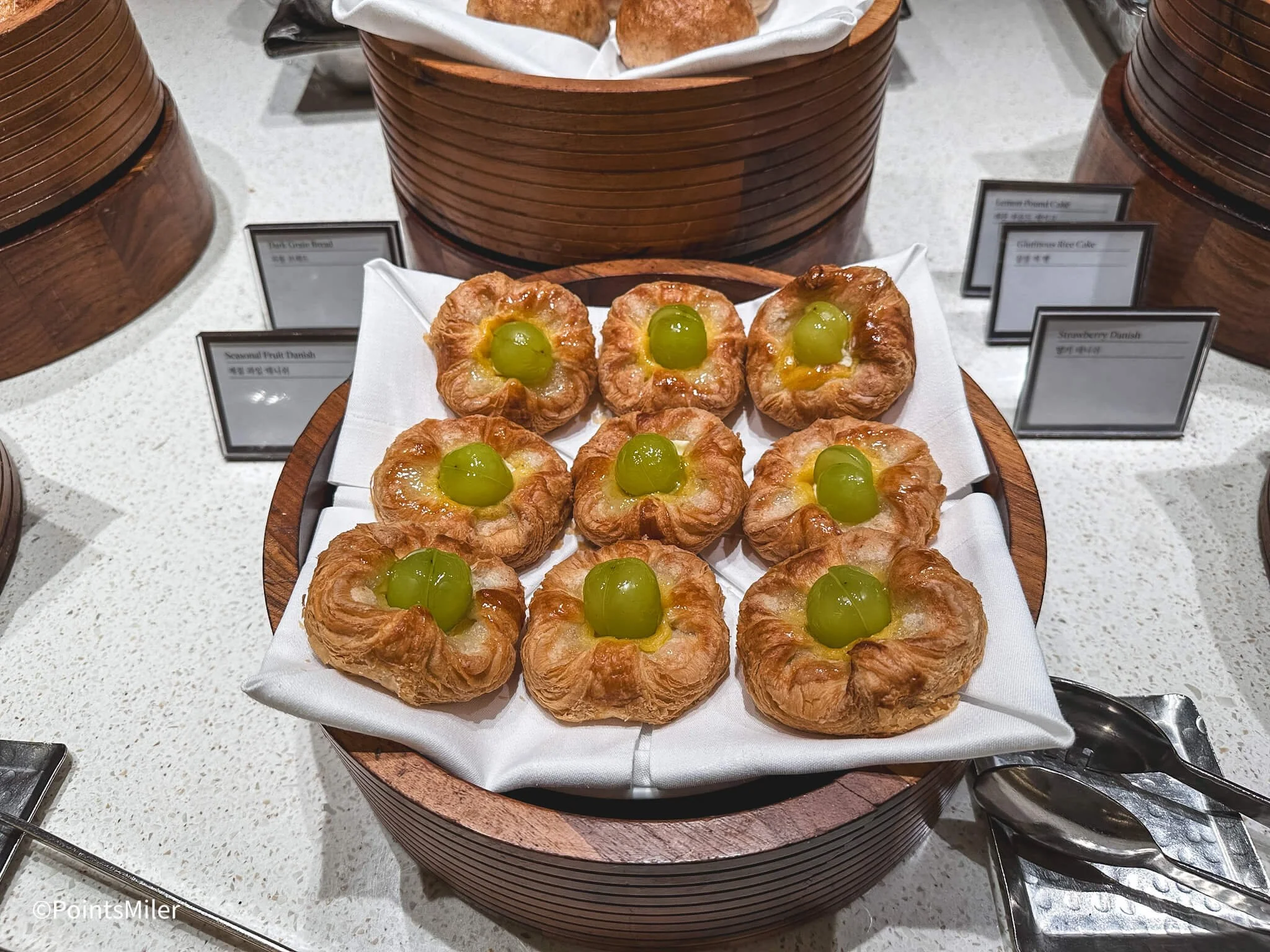
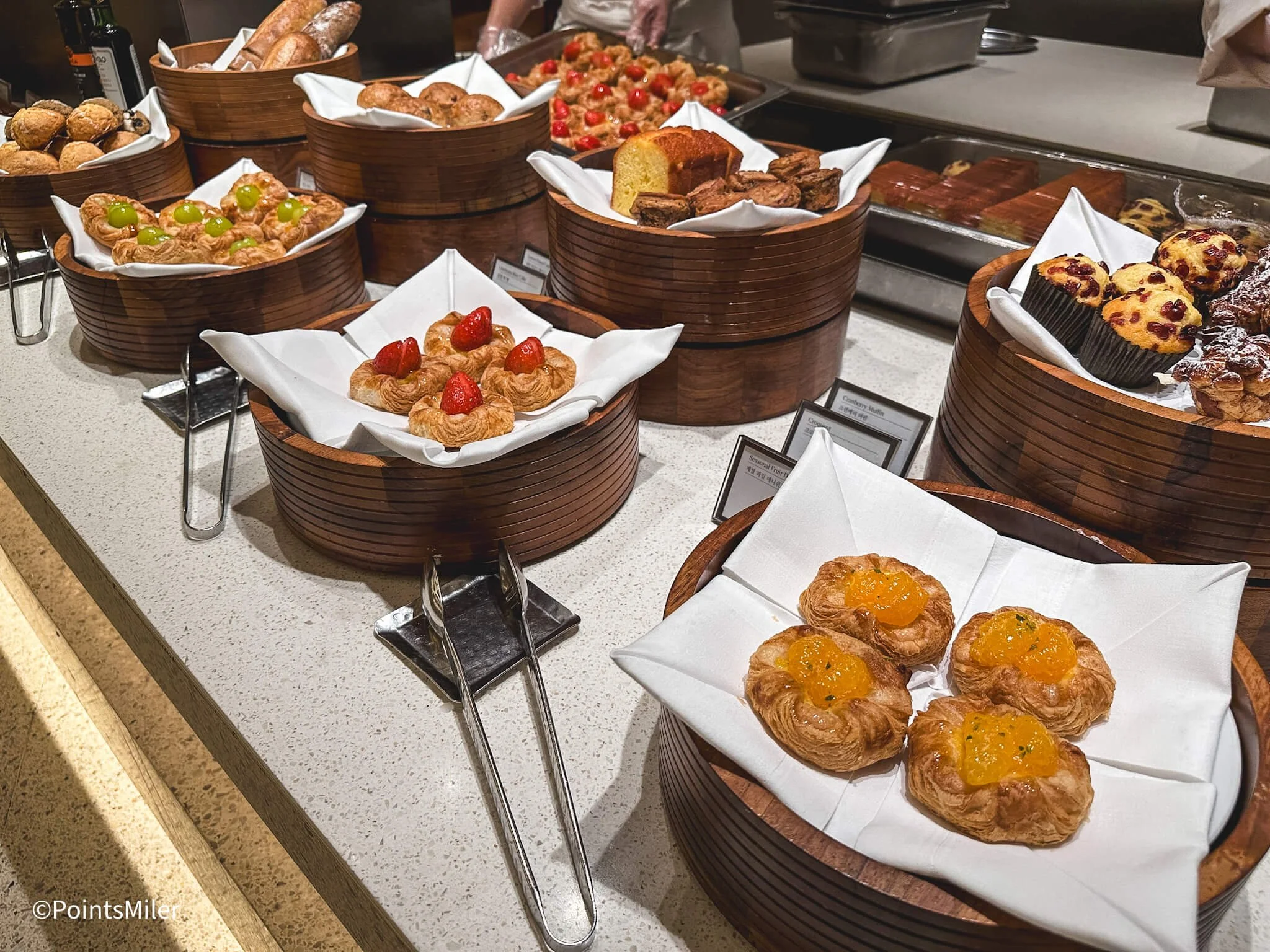
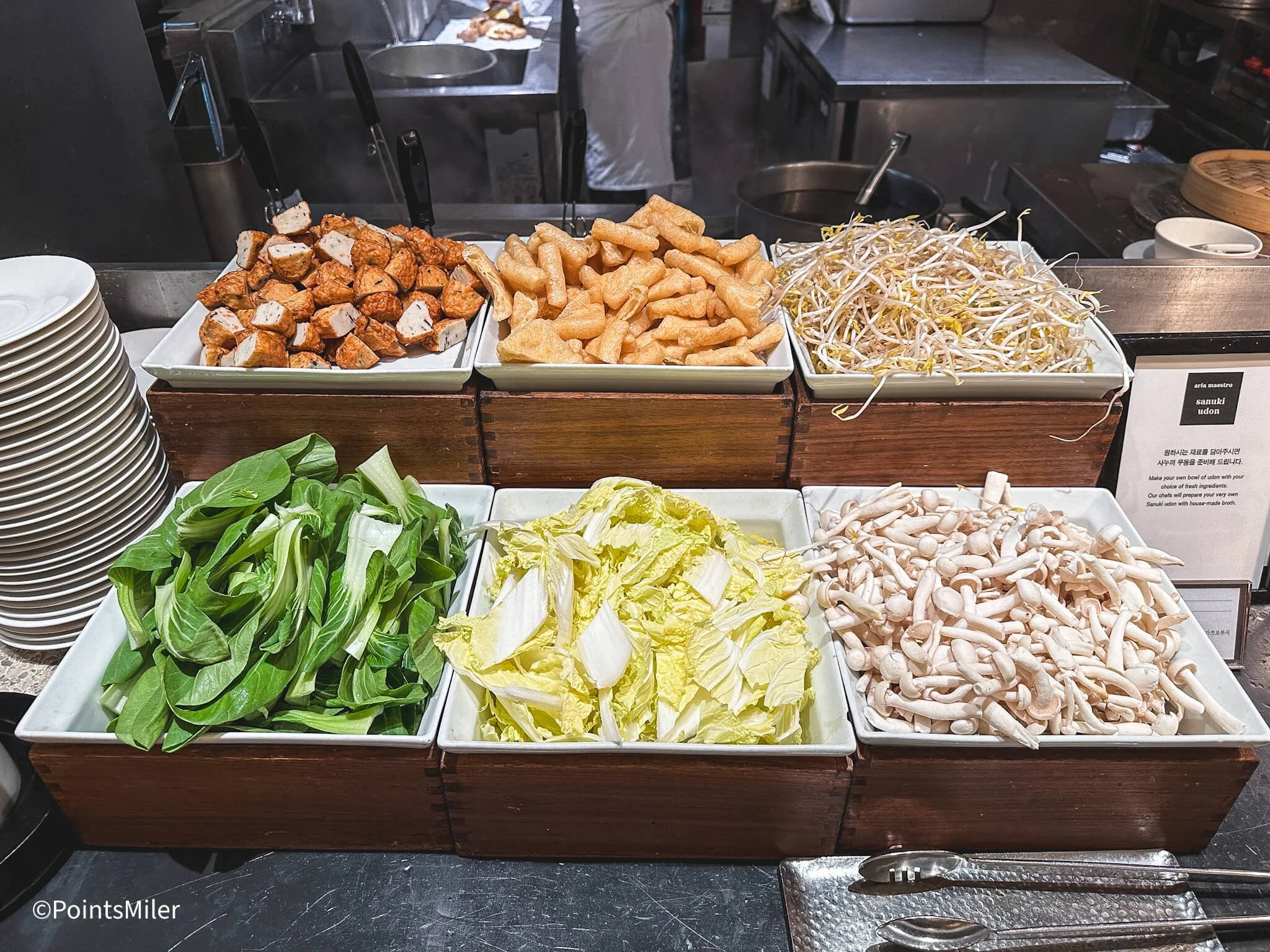



![Credit Card Review: AMEX Business Gold [October 2023 Update]](https://images.squarespace-cdn.com/content/v1/5e155597124c2c0cab493f6e/1697555612832-NDDR5MR5AZERP6TF7JOW/IMG_R_0005.JPG)


